Jimmy Allison
San Antonio Bar’s Most Dedicated Ambassador
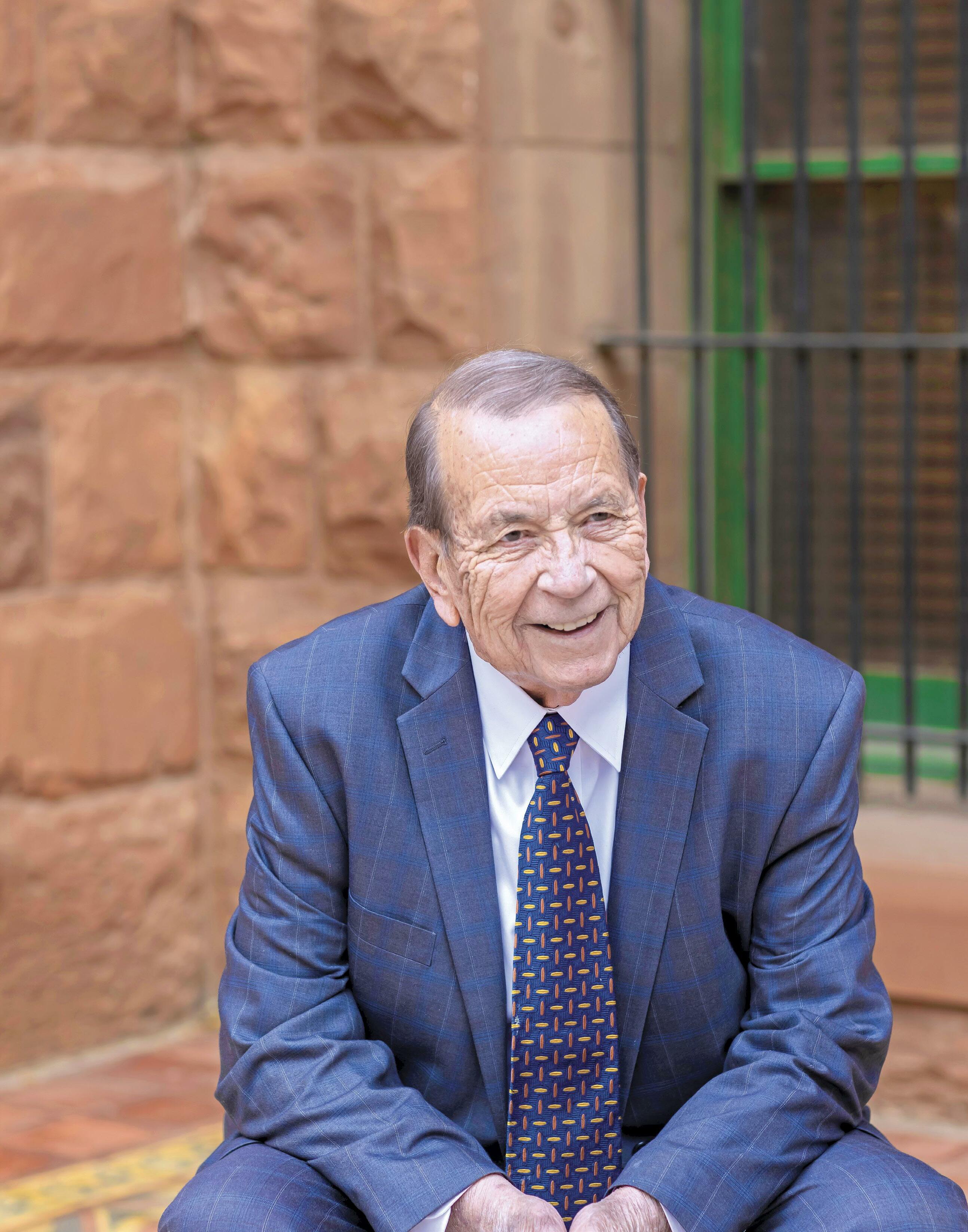
January–February 2023
Official Publication of the San Antonio Bar Association
ON THE COVER
7 Bravo, Jimmy! SABA’s Most Dedicated Ambassador By SABA Staff
FEATURES

January–February 2023 | San Antonio Lawyer® 3
12
21
contents DEPARTMENTS 5 ReflexiÓnes
28 Fourth Court Update By
29 Federal Court Update By
BAR BUSINESS 27 Inaugural Pickleball Tournament a Hit! SABA, SABF, SAYLA Award Nominations
8 When Should the Texas Windstorm Insurance Association Pay an Appraisal Award? By Robert Loree and Cassandra Pruski
The Trial of Sam Sheppard Part I: The Crime By Mark J. Phillips and Aryn Z. Phillips 17 These Three Words, Part III By ileta! A. Sumner
Famous Lawyers In American History: Daniel Webster By Harry Munsinger
By Donna McElroy
Chief Justice Rebeca C. Martinez and Jack Salmon
Soledad Valenciano, Melanie Fry, and Jeffrie Lewis
By SABA Staff
Jimmy Allison and June Moynihan in the Bexar County Law Library
7
Photo by Mewborne Photography.
San Antonio Lawyer® is published bimonthly. Copyright ©2022 San Antonio Bar Association. All rights reserved. Republication of San Antonio Lawyer content, in whole or in part, is prohibited without the express written permission of the San Antonio Bar Association. Please contact Editor in Chief Sara Murray regarding republication permission.
Views expressed in San Antonio Lawyer are those of the authors and do not necessarily reflect the views of the San Antonio Bar Association. Publication of an advertisement does not imply endorsement of any product or service. San Antonio Lawyer, the San Antonio Bar Association, and the Publisher reserve the right to edit all materials and assume no responsibility for accuracy, errors, or omissions. San Antonio Lawyer and the Publisher do not knowingly accept false or misleading advertisements or editorials, and do not assume any responsibility should such advertising or editorials appear.
Contributions to San Antonio Lawyer are welcome, but the right is reserved to select materials to be published. Please send all correspondence to info@sabar.org
Advertising Inquiries:
Monarch Media & Consulting, Inc. Chellie Thompson 512.293.9277 chellie@monarchmediainc.com

Archives of San Antonio Lawyer are available at sabar.org. Send address changes to the San Antonio Bar Association.
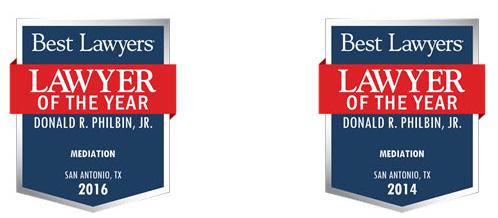
EDITORS
BOARD OF EDITORS
Publication Design and Production: Monarch Media & Consulting, Inc.
Editor in Chief Sara Murray
Articles Editor Natalie Wilson
Departments Editor Leslie Sara Hyman Editor in Chief Emeritus Hon. Barbara Nellermoe
PUBLISHING PARTNER
Monarch Media & Consulting, Inc. 512.293.9277 | monarchmediainc.com

Design Direction Andrea Exter Design Sabrina Blackwell
Advertising Sales Chellie Thompson
Sara Murray, Chair
Pat H. Autry, Vice-Chair
Barry Beer
Amy E. Bitter
Ryan V. Cox
Paul Curl Shannon Greenan
Stephen H. Gordon
Leslie Sara Hyman Rob Killen
Thomas Lillibridge Rob Loree
Lauren Miller
Curt Moy Harry Munsinger
Hon. Barbara Nellermoe Steve Peirce
Donald R. Philbin Clay Robison
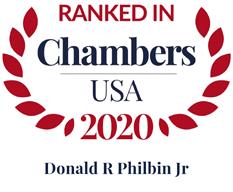
Regina Stone-Harris ileta! Sumner Natalie Wilson
Ex Officio Donna McElroy Chellie Thompson
For information on advertising in San Antonio Lawyer: Call 512.293.9277
Chellie Thompson, Monarch Media & Consulting, Inc. chellie@monarchmediainc.com
100 Dolorosa, Suite 500, San Antonio, Texas 78205 210.227.8822 | sabar.org
/ DIRECTORS
President Donna McElroy
President-Elect
Steve Chiscano
Treasurer Patricia “Patty”
Rouse Vargas
Secretary Nick Guinn
Immediate Past President
Lawrence Morales, II
Directors (2021-2023)
Kacy Cigarroa Tiffanie Clausewitz Grant McFarland Jaime Vasquez
Directors (2022-2024) Emma Cano Charla Davies Charles "Charlie" Deacon Jorge Herrera Executive Director June Moynihan
State Bar of Texas Directors
San Antonio Bar Foundation Chair Lawrence Morales, II
Association of Corporate Counsel South/Central TX
Bexar County Women’s Bar Association
Christian Legal Society
Defense Counsel of San Antonio
Federal Bar Association—San Antonio
Mexican-American Bar Association—San Antonio
San Antonio Black Lawyers Association
San Antonio Criminal Defense Lawyers Association

San Antonio Trial Lawyers Association

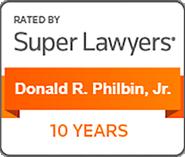
San Antonio Young Lawyers Association
TEX-ABOTA, American Board of Trial Advocates—San Antonio William S. Sessions Inn of Court

4 San Antonio Lawyer® | sabar.org
OFFICERS
LOCAL BAR ASSOCIATIONS STATE BAR / SA BAR FOUNDATION “His grasp of the forces that drive a successful mediation is always spot on.” “A real thinker and innovator” “One of the smartest, most talented mediators I know” “Lots of really innovative and clever ideas for helping people close” “Works hard to ensure the parties are aware of the risks” Mediation Booking: DonPhilbin.com Scheduling Assistance: (210) 212-7100 ®
Publication
Tom Crosley Lawrence Morales, II the
Official
of
San Antonio Bar Association
ReflexiÓnes
What’s New in 2023?
By Donna McElroy San Antonio Bar Association President

Thirty-six years ago, a wide-eyed young, firstgeneration attorney moved to San Antonio, Texas, to begin her legal career. Even though the only people I knew in San Antonio were the lawyers I met while working as a summer associate at what was then Cox & Smith, I decided that San Antonio was a place that presented me with an excellent opportunity to have a career and a life. I loved the culture, the history, the small town in a big city, and most importantly, the people I encountered. Among the experiences that brought me here was a hotly contested hearing in bankruptcy court, after which the judge invited all of the lawyers to his chambers to chat about personal lives and to tell the summer associates in the group about the San Antonio legal community and why it was better than those in other big Texas cities (He was right.). After we left the hearing, the partner I was with insisted that we go visit the Alamo in business suits, carrying briefcases as we walked through the mission, because it was right there, and I had not seen it yet. Couple that with eating tacos for breakfast for the first time, spaghetti for lunch at the Milam, Queso Flameado and margaritas on the rocks at La Fogata, and I was, and continue to be, hooked!
I wanted to build my legal career here because although San Antonio’s legal community was comprised of hardworking lawyers who advocated for their clients and treated one another professionally and respectfully in the courtroom, it was also a community comprised of lawyers that could visit amicably about kids, sports, or other personal issues in a judge’s chambers after a contested hearing or chat with one another in the checkout line at HEB later that evening.
The collegiality of the San Antonio Bar has not just continued through the years, but it has also improved. A strong part of this collegiality comes from the time lawyers spend together in person, and this time spent together also helps young lawyers learn and develop as practitioners. So I am very happy to announce that SABA’s new space will actually be opened in early 2023. Lawrence said in his message last year that it would be opened on April 1, 2022, but many people missed that April fool’s joke! Truly, new space is coming in 2023. This will be a central space near the courthouse that will allow us to come together in person more frequently.
As your 2022-23 SABA president, I look forward to our continuing to rekindle our in-person events and expand our
reach to more members of the San Antonio legal community. Looking at each other on the “Brady Bunch” style screens simply does not offer the same benefits.
The other area of focus is to continue to build the Dawn Bruner Finlayson Fellowship program, which provides needbased financial assistance to first-generation students who excel academically and are interested in spending their legal careers in San Antonio. Through the work of the Fellowship Committee, we were able to launch the First Annual Fellowship scholarships, and we awarded $32,500 in scholarships to three law students, three undergraduate students, and a student court reporter. More importantly, we raised $55,000 at the Gala to add to the scholarship corpus, and we intend to grow the corpus to be selfsustaining.
Also, we are working on a pilot program to connect small businesses with transactional lawyers who can help get the proper (not from Google) documents for their businesses, whether for a new business or for structuring the transfer of an established family-owned business to the next generation. We will look to connect transactional SABA members to these businesses for fee-based transactions that are priced at a level that will let the clients and the lawyers grow together in their businesses and legal practices. We believe this will help us continue to grow SABA’s membership, in part by bringing attorneys into SABA that we might not otherwise meet because they are not usually at the courthouse.
I am honored and humbled to serve as your President. Please plan to come, in person, to our events! There is something for everyone: a grand opening for our new space, a Clay Shoot, a Law Day Luncheon, a Pickle Ball Tournament, a Chili Cookoff, and many CLEs and other events with adult refreshments to be held in our new space. Plans are also in the works to bring back the Super Super Bar, in collaboration with the affinity bars that, together with SABA, make the San Antonio legal community one that other legal communities envy! I welcome ideas about what SABA can do for you or how to continue to expand our ranks. Of course, remember if it is your idea, you might be the new committee chair!
January–February 2023 | San Antonio Lawyer® 5
Donna McElroy at Mission San Jose in San Antonio photo by Mewborne Photography
We don’t just build a plan.
At Frost, we take the time to build relationships with our customers. After all, we think it’s the only way to help them best manage, protect and distribute the assets they’ve worked hard to acquire over a lifetime. Whether your clients need probate or trust administration, real estate or mineral management, special needs trusts or anything in between, we’re here to help.

Visit us at frostbank.com or call (210) 220-5016
Investment management services and trust services are o ered through Frost Wealth Advisors of Frost Bank. Investment and insurance products are not FDIC insured, are not bank guaranteed, and may lose value. Brokerage services o ered through Frost Brokerage Services, Inc., Member FINRA/SIPC, and investment advisory services o ered through Frost Investment Services, LLC, a registered investment adviser. Both companies are subsidiaries of Frost Bank. Additionally, insurance products are o ered through Frost Insurance. Deposit and loan products are o ered through Frost Bank, Member FDIC.
WE BUILD RELATIONSHIPS.
Bravo, Jimmy!
SABA’s Most Dedicated Ambassador
If These Walls Could Talk
In 1955, Jimmy Allison started his career as the Clerk to Judge Sol Casseb, Jr. in the Bexar County Courthouse. Ten years later, he took leadership of the San Antonio Bar Association (SABA), and he reported for work at the SABA offices in the Bexar County Courthouse. Ten years after that, Jimmy opened the Bexar County Law Library and added Bexar County Law Librarian to his duties. In 2017, after fifty-two years of leading SABA, Jimmy retired to just the one job he still holds today, Bexar County Law Librarian, supervising on the fifth floor of the courthouse. The Bexar County Courthouse was built in 1898. Jimmy has worked in the building for sixty-seven continuous years, more than half of the building’s existence. If these walls could talk, Jimmy probably was there to hear it the first time, too!


– June Moynihan
Above left: Jimmy Allison in the Bexar County Law Library. Top right: Allison has worked within the bustling Bexar County Courthouse for sixty-seven continuous years. Above right: Allison stationed at the fifth-floor law library reception desk.

An Ambassador of Good Will
When I was visiting with Jimmy in the fifth floor library recently, I was really impressed with his depth of knowledge about the courthouse and all its workings. Several people (not lawyers) got off the elevator on the fifth floor, approached Jimmy at his desk, and asked questions. He graciously and happily directed them where to go and what they needed to do concerning a variety of issues. He always did it clearly and with a smile—like an ambassador of good will.
– Robert Loree
June Moynihan is the current Executive Director of SABA.
Robert Loree is the managing partner of Loree & Lipscomb, which specializes in representing policyholders across the country in insurance-related matters.
January–February 2023 | San Antonio Lawyer® 7
On the Cover
Photos by Mewborne Photography.
When Should the Texas Windstorm Insurance Association Pay an Appraisal Award?
 By Robert Loree and Cassandra Pruski
By Robert Loree and Cassandra Pruski
When should the Texas Windstorm Insurance Association pay an appraisal award? This seemingly simple question does not have an easy answer. For most insurance companies doing business in Texas, Chapter 542 of the Texas Insurance Code and established recent case law govern when claims must be paid (regardless of the use of the appraisal process).1 The Texas statutory framework unique to the Texas Windstorm Insurance Association (“TWIA”), however, mandates use of the appraisal process, but exempts the TWIA from the Chapter 542 guidelines.2 This exemption presents a problematic lack of statutory guidance concerning the payment of appraisal awards by the TWIA. Before addressing the question of when the TWIA should make a payment, though, it is necessary to present some background and context about the TWIA and the claims process that results in an appraisal award.
What is the TWIA?
Although the TWIA statute sets out the deadline for setting aside an appraisal award, neither the statute nor the TWIA policy provides a deadline for the completion of the appraisal process or payment of an appraisal award. Both are silent on the timing of payment, if neither party is going to attempt to set aside the award. This is a glaring hole in the statute.
The TWIA is Texas’s windstorm and hail insurer of last resort for coastal counties and parts of Harris County.3 It was established by the Texas Legislature in 1971, after Hurricane Celia, to insure that people in high-risk areas could still procure hail and windstorm insurance.4 The TWIA is funded by a combination of policy premiums, the Catastrophe Reserve Trust Fund (CRTF), public securities, company assessments, and reinsurance.5
As part of the windstorm and hail coverage TWIA provides, its policies cover damages caused by wind-driven rain.6 They also cover loss of use of the insured property and consequential damages.7 TWIA policies do not cover flooding, which includes any damage from tidal or storm surges. Flood coverage is typically provided by a separate policy governed by the National Flood Insurance Program.
The TWIA had a troubled history after
8 San Antonio Lawyer® | sabar.org
Bridge damage during Hurricane Harvey in Kemah, Texas. Photo by Eric Overton, iStock.
Hurricane Ike struck the Galveston and Houston area in 2008 (which is not detailed here), and that led the Texas Department of Insurance to order administrative oversight from February 2011 to April 8, 2016.8 As a result of this need for oversight, in July 2011 the Texas Legislature passed House Bill 3, which required increased transparency within the organization and overhauled the policy forms that TWIA issues. Most importantly, it removed TWIA claims from the purview of Chapters 541 and 542 of the Texas Insurance Code and the Texas Deceptive Trade Practices Act and created a new statutory process, unique to TWIA, for handling and resolving claims.9
What is the TWIA claim process?
The TWIA claims process is outlined in Tex. Ins. Code §§ 2210.571-.581.10 Under these sections, an insured has one year from the date of loss to file a claim.11 Within thirty days after the insured files a claim, the TWIA may request any information necessary to determine whether to accept or reject the claim.12
Generally, within sixty days of receiving the claim (or sixty days from the date it receives the information requested), the TWIA must provide the insured written notice of its claim decision.13 That notice must explain that the TWIA is accepting or rejecting the claim in full or in part; the reasons for its decision; and the amount it will pay, if any.14 If the TWIA accepts any portion of the insured’s claim, it must pay the accepted amount of the claim within ten days of providing the notice.15
If the insured disagrees with the amount the TWIA has paid on an accepted loss, the insured’s only recourse is to demand appraisal within sixty days after receiving the claim decision.16 If the insured does not timely demand appraisal, the insured is statutorily barred from suing the TWIA or otherwise contesting the accepted portion of the claim and any amount the TWIA has paid.17 If the insured disagrees with the TWIA’s decision on a denied loss (whether in full or in part), the insured may pursue litigation after providing notice to the TWIA.18
For the accepted claims, the appraisal process must be conducted in accordance with the terms of the TWIA’s policy, and the costs of appraisal are shared equally by the TWIA and the insured.19 Under the policy, the insured and the TWIA each select an individual appraiser to determine the amount of the loss.20 The appraisers then jointly select an umpire. If the appraisers cannot agree on the amount of the loss, it is then submitted to
While Tex. Ins. Code ch. 2210 for TWIA claims is detailed and specific on many issues, it is silent on the timing for the completion of the appraisal process and the deadline to pay a binding appraisal award. These omissions have led to delays and left many TWIA insureds waiting on policy benefits.
the umpire. An agreement by any two of these individuals determines the amount of the loss. The agreement is memorialized in a signed appraisal award.
An appraisal award issued as a result of the TWIA appraisal process is binding on the insured and the TWIA as to the amount of loss the TWIA will pay on all accepted portions of the claim.21 The amount of the award is not reviewable or appealable. An insured who disagrees with the appraisal award can only seek court intervention to set aside the appraisal award and begin a new appraisal process.22
Courts will only set aside the award in certain statutorily provided circumstances. First, Tex. Ins. Code § 2210.574(g) provides that an appraisal award in a TWIA claim can be set aside for fraud, corruption, partiality, or misconduct.23 It can also be set aside if the appraisers or umpire exceed their powers, refuse to consider evidence material to the claim, or conduct the appraisal in a manner prejudicial to the rights of the insured or the TWIA.24 An insured or the TWIA must bring suit to vacate an appraisal award within two years of that award.25 The TWIA also cannot bring an action against the insured for declaratory or other relief before the expiration of 180 days from the date of the appraisal award.26
So when should the TWIA pay an appraisal award?
Although the TWIA statute sets out the deadline for setting aside an appraisal award, neither the statute nor the TWIA policy provides a deadline for the completion of the appraisal process or payment of an appraisal award. Both are silent on the timing of payment, if neither party is going to attempt to set aside the award. This is a glaring hole in the statute.27 Either the Texas Legislature or the Texas Department of Insurance should rectify this omission and mandate specified
time periods to complete the appraisal process, render an appraisal award, and pay the award.28
These statutory omissions have resulted in appraisals being delayed many months before the appraisal award is rendered, and then many more months before the award is paid. Often, the TWIA will not pay an appraisal award, claiming that it is beyond the scope of the TWIA’s original repair estimate and includes items that are not covered. This is done even though the appraisal is solely on the accepted/ covered portions of the claim and determines that scope of repairs.
In practice, instead of moving to set an appraisal award aside for any of the applicable statutory grounds, the TWIA often just delays payment since there is no statutory deadline for the payment of an appraisal award. Without such a deadline, the TWIA can try to renegotiate the amount of the appraisal award to its liking before paying a reduced amount. Such delays often leave the TWIA’s insureds in a difficult position because they need the funds to make the necessary repairs.
In such circumstances, however, the insured is not without a remedy. While the
continued on page 10

January–February 2023 | San Antonio Lawyer® 9
FIND OUT MORE: TLIE.ORG or (512)
RISK-TAKING CAN BE FUN... …BUT NOT WHEN IT’S A MALPRACTICE CLAIM. Real Estate Litigation Claim* • Lawyer sued for error in service of process • Damages of up to $1,000,000 alleged • TLIE settled claim for $2,500 INSURED BY TLIE Total out-of-pocket (deductible) = $1,000 IF NOT INSURED Defense costs $35,000 Settlement + $2,500 Total out-of-pocket = $37,500 * Based on actual claim handled by TLIE.
480-9074
TWIA statutory framework exempts the TWIA from certain laws, the TWIA statute only controls to the extent of any conflict between the TWIA statute and any other law.29 Here, because of the statutory framework and the TWIA’s policy’s silence on the matter,
there is no conflict with the Texas common law on contracts.30 As a result, the insured is entitled to apply the well-settled contractual doctrine that when no time of performance is stated, the law will imply a reasonable time.31 While the reasonableness of any specific time period has not yet been litigated, the authors would suggest that ten days after the award is entered would be per se reasonable in light of the statute’s use of ten days for all other TWIA payments.32 Concurrent with that date, the Texas Legislature should also impose upon TWIA the requirement of notifying the insured of the reasons for denying the payment of an appraisal award and require TWIA to promptly move to set an appraisal award aside, if it intends to do so. Such deadlines should prevent delays and allow a TWIA insured to more promptly pursue its legal remedies, if necessary.

Conclusion
While Tex. Ins. Code ch. 2210 for TWIA claims is detailed and specific on many issues, it is silent on the timing for the completion of the appraisal process and the deadline to pay a binding appraisal award. These omissions have led to delays and left many TWIA insureds waiting on policy benefits. Simple amendments to Tex. Ins. Code §§
2210.574(d) and (f) providing deadlines would easily resolve this problem. A bright-line rule would also facilitate the prompt payment of an appraisal award so that a TWIA insured could obtain the policy benefits necessary to repair its storm-damaged property, which is the goal of the whole appraisal process.



Robert Loree is the managing partner of Loree & Lipscomb, which specialized in representing policyholders

ENDNOTES








1Hinojos v. State Farm Lloyds, 619 S.W.3d 651, 652-53 (Tex. 2021).
2Tex. Ins. Code § 2210.572(a).
3These fourteen first-tier coastal counties are Aransas,
10 San Antonio Lawyer® | sabar.org Through the years, ATKG’s Litigation Support team has built strong relationships with noteworthy attorneys across Texas. Isn’t it time you put us to work for you? OUR RELENTLESS PURSUIT OF CLIENT SATISFACTION Internal Control Assessment Fraud Examination Due Diligence Quality of Earnings Analysis Litigation Support Business Disputes and Divorce Expert Witness Forensic Accounting Business Valuation 210.733.6611 atkgcpa.com AStone@atkgcpa.com
across the country in insurance-related matters.
Cassandra Pruski is an associate at Loree & Lipscomb.
continued from page 9
Hurricane Ike damage. Photo by Jodi Jacobson, iStock.
Brazoria, Calhoun, Cameron, Chambers, Galveston, Jefferson, Kennedy, Kleberg, Matagorda, Nueces, Refugio, San Patricio, Wiley, and parts of Harris County east of Highway 146.
4Learn About TWIA, Texas Windstorm Insurance Association, https://www.twia.org/about-us/learnabout-twia/.
5Funding 101, Texas Windstorm Insurance Association, https://www.twia.org/news-media/ media-resources/funding-101/.
6Tex. Ins. Code § 2210.208.
7Id.
8Jennifer T. Armstrong, 2016 Texas Windstorm Association Annual Report Card, 5, 14 available at: https://www.twia.org/wp-content/ uploads/2015/03/2016-Annual-Report-Card-wCAT-Plan_Final-2.pdf
9Armstrong at 14-20; Tex. Ins. Code § 2210.014; Tex. Ins. Code § 2210.572.
10 Several of those statutory sections are also incorporated into the insurance policies that TWIA sells. See Forms, Sample Policies, Endorsements, Certificates, Texas Windstorm Insurance Association, https://www.twia.org/forms-samplepolicies-endorsements-certificates/ 11Tex. Ins. Code §2210.205(a). If an insured shows good cause, the commissioner of insurance may extend this deadline up to 180 days. Id. §2210.205(b).
12Id. §2210.573(a).
13Id. § 2210.573(d).
14Id. §2210.573(d)-(e). While the TWIA statute provides for only sixty days, the Texas Commissioner of Insurance can extend the claims handling time periods. Id. § 2210.581.
15Id. § 2210.5731.
16Id. §2210.574(b).
17Id. § 2210.574(f).
18Id § 2210.575.
19Id. §2210.574(d).
20 See Forms, Sample Policies, Endorsements, Certificates, Texas Windstorm Insurance Association, https://www.twia.org/forms-samplepolicies-endorsements-certificates/.
21 Tex. Ins. Code § 2210.574(f).
22 Tex. Ins. Code § 2210.574(f) and (g).
23 Tex. Ins. Code § 2210.574(g).
24 Id
25 Id
26 Tex. Ins. Code § 2210.579(b).
27 Tex. Ins. Code § 2210.574(g).
28 In 2019, legislation was proposed to provide deadline relating to TWIA appraisals, but the proposed bill never got out of the committee.
29 Id. § 2210.579(a).
30 The TWIA statute only controls to the extent of any conflict between the TWIA statute and any other law. Id § 2210.579(a).
31 Moore v. Dilworth, 142 Tex. 538, 179 S.W.2d 940, 942 (Tex. 1944); Batjet, Inc. v. Jackson, 161 S.W.3d 242, 246-47 (Tex. App.—Texarkana 2005, no pet.).
32 Tex. Ins. Code § 2210.5731.
Gallant Computer Investigative Services, LLC
David T. Gallant
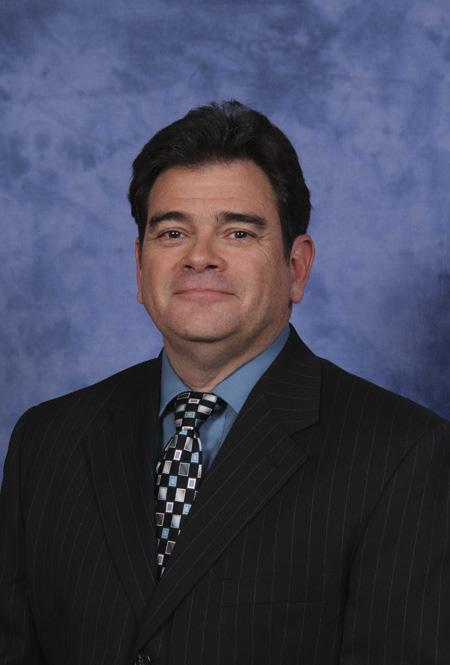
Licensed Texas Private Investigator (A15633)
Federal Agent
• Experienced, having conducted more than 25,000 mediations since 1989 with more than 850 years’ experience practicing law
• Committed to the mediation process and devoted to the ethical practice of law
• Covered by the AAM Member Insurance Group Policy, an arbitrator and mediator professional liability insurance
Areas of Practice
Appellate Bankruptcy Business/Commercial Civil Rights Condemnation Construction Consumer Education Employment & Labor Entertainment Family Farm & Ranch Health Care Insurance Intellectual Property International Medical Oil & Gas Personal Injury Professional Liability Real Estate Securities Taxation Title Insurance Wills, Trusts & Estates
For more information, contact the local San Antonio Chapter. www.attorney-mediators.org/SanAntonioChapter Gary Javore - gary@jcjclaw.com
John Boyce, III 210.736.2224 jkbiii@boyceadr.com Leslie Byrd 210.229.3460 leslie.byrd@bracewell.com Debbie Cotton 210.338.1034 info@cottonlawfirm.net Michael Curry 512.474.5573 mcmediate@msn.com Aric J. Garza 210.225.2961 aric@sabusinessattorney.com Charles Hanor 210.829.2002 chanor@hanor.com Ronald Hornberger 210.734.7092 rhornberger@pg-law.com Gary Javore 210.733.6235 gary@jcjclaw.com Daniel Kustoff 210.614.9444 dkustoff@salegal.com
J.K. Leonard 210.445.8817 jk@jkladr.com Cheryl McMullan, Emeritus 210.824.8120 attyelder@aol.com Dan Naranjo 210.710.4198 dan@naranjolaw.com Patricia Oviatt 210.250.6013 poviatt@clarkhill.com Jamie Patterson 210.828.2058 jamie@braychappell.com Diego J. Peña 817.575.9854 diego@thepenalawgroup.com Don Philbin 210.212.7100 don.philbin@adrtoolbox.com Edward Pina 210.614.6400 epina@arielhouse.com Richard L. Reed, Sr. 210.451.6920 rreed@coatsrose.com
Wade Shelton 210.349.0515 wshelton@shelton-valadez.com
Thomas Smith 210.227.7565 smith@tjsmithlaw.com John Specia 210.734.7092 jspecia@pg-law.com Phylis Speedlin 210.405.4149 phylis@justicespeedlin.com Lisa Tatum 210.249.2981 ltatum@tatum-law.com William Towns 210.819.7453 bill.towns@townsadr.com James Upton 361.884.0616 jupton@umhlaw.com Brittany Weil 361.548.2611 brittanymweil@gmail.com
January–February 2023 | San Antonio Lawyer® 11
Recommended by Judges and Attorneys
Data™
Retired
(AFOSI) Court Certified Expert Witness (Federal/State/Military) (210) 271-2999 Titan Building 2700 NE Loop 410, Ste. 301, San Antonio, TX 78217 www.WhatsOnThePhone.com The Proof is in the
Digital Forensics/Cell Tower Geolocation Mapping Cell Phone Records Analysis for MVAs
The Trial of Sam Sheppard Part I: The Crime
By Mark J. Phillips and Aryn Z. Phillips
On September 4, 1951, President Harry Truman spoke to the nation on television, and for the first time a broadcast was watched by viewers coast to coast at the same time. America, and especially its media, had come of age.
The 1950s represented a decade of unprecedented prosperity, progress and optimism. Inflation stayed low, and Americans found jobs. Suburbs boomed. Passenger jets entered service, and Americans traveled. The ravages of polio became a dark horror of the past, and Disneyland a beacon of the future. Bing Crosby and Perry Como gave way to Elvis Presley and Chuck Berry. The launch of Sputnik and the Cold War were coming, but those celebrating the Fourth of July in 1954 felt part of a new and youthful era.
The murder of Marilyn Sheppard in her bedroom during the early morning hours of July 4, 1954, remains one of America’s most notorious unsolved crimes. Young
and beautiful, the mother of one child and pregnant with another, her bludgeoning death transfixed a nation. Every circumstance of her death and the nine-week trial of her husband that followed became fodder for an unprecedented crush of newspaper coverage. In what the United States Supreme Court later called “a carnival,” hundreds of reporters took up every inch of the Cleveland courtroom, reporting every line of testimony, and tracking the judge, jurors, lawyers, and witnesses from home to court and back again. No one moved in the corridors without being questioned. Newsmen handled the evidence as it was offered during the proceedings. They set up a television station in a room next to the jury.
On trial was not just Marilyn’s physician husband, but also the image of America’s newfound suburban lifestyle, with its privilege, comfort, and infidelity. Purveyors of America’s exploding postwar ambition and optimism needed an outlet in the 1950s, and the national media found it in the trial of Dr. Sam Sheppard.
The outside of the Sheppard home on July 4, 1954. Photo courtesy of the Cleveland State University College of Law Library in the archived Bay Village Police Department Investigation Photos collection.

Marilyn and Sam Sheppard. Photo courtesy of Cleveland State University, Michael Schwartz Library, Special Collections.
Sam and Marilyn were both raised in Cleveland, Ohio, and had known each other since childhood. Born in 1923, Sam was the youngest of the three sons of Dr. Richard Allen Sheppard. His father and both of his older brothers were Doctors of Osteopathic Medicine, and his father ran a prominent Cleveland medical clinic. Good-looking and personable, Sam was elected president of virtually every club he joined and was voted class president for all three years he was in high school. He lettered in varsity football, basketball, and track, and at graduation was awarded Most Valuable Athlete.

12 San Antonio Lawyer® | sabar.org
was not just Marilyn’s physician husband, but also the image of America’s newfound suburban lifestyle, with its privilege, comfort, and infidelity. Purveyors of America’s exploding postwar ambition and optimism needed an outlet in the 1950s, and the national media found it in the trial of Dr. Sam Sheppard.
Dark-haired and beautiful, Marilyn was the elder of the two by eighteen months, graduating high school a year before Sam and attending Skidmore College in New York. Sam, in his turn, enrolled in Hanover College in Indiana, then took supplementary courses at Western Reserve University in Cleveland. Following in the footsteps of his father and brothers, he moved to Los Angeles to finish his education at the Los Angeles Osteopathic School of Physicians and Surgeons, was awarded the D.O. degree, and commenced internship and residency in neurosurgery at Los Angeles County General Hospital. He asked Marilyn to join him in Los Angeles, and they were married on February 21, 1945. Returning to Ohio in 1950, they bought a waterfront home at 28944 Lake Road in Bay Village, along the shore of Lake Erie. In the 1950s, Bay Village was a wealthy, middle-class suburb west of Cleveland, with quiet streets and nice houses, everything that the post-war boom in America promised in its advertising and movies. Village neighbors knew each other and shopped in local stores. Its small five-man police force rarely handled more than accidents and disturbances. Until July 4, 1954, it had not investigated a murder. The Sheppard family of physicians was popular and prominent in the small town, and their clinic, Bay View Hospital, was the only hospital in Bay Village.
Sam and Marilyn settled down to what, by all appearances, was an ideal suburban marriage. In the summer of 1954, Sam was working at the family-owned Bay View Hospital while Marilyn stayed home with their seven-year-old son, Sam Reese Sheppard, then called “Chip.” In July she was four months pregnant.
But all was not ideal in the Sheppard home. Initially denied by him, Sam’s infidelity was eventually proven at trial, although the degree of the infidelity was in some doubt. Certainly, he was carrying on a torrid, three-year-long



extramarital affair with Susan Hayes, a former employee at the hospital. According to some, Marilyn was at least resigned to his affairs, if not happy.1 To others, the marital discord between Sam and Marilyn was obvious by the summer of 1954.2
Saturday, July 3, 1954, was a busy one for Sam. A father brought his young son into the emergency room after the boy had been hit by a utility truck. Sam rushed the small child
to the operating room, cut open his chest, massaged his heart, and attempted other resuscitation efforts. None were successful, and the boy died. An exhausted Sam left the hospital that afternoon, stopped to visit his parents, and headed home.3
That evening, Sam and Marilyn were hosting their neighbors, Don and Nancy
January–February 2023 | San Antonio Lawyer® 13
Office@ProntoProcess.com 210-226-7192 www.ProntoProcess.com Nationwide Process Serving Skip Tracing Court Filings Online Repository Managing Too Much? LeT us heLp. You fiLe iT and we do The resT! Edward Hodge is a registered representatives of and offers securities and investment advisory services through MML Investors Services, LLC. Member SIPC (www.SIPC.org). Supervisory office: CRN #: CRN202104-241908 I focus on being a resource to Attorneys Ned Hodge nedhodge.com (210) 332-3757 INSURANCE PROFESSIONAL Protect your income, family & business. • Life Insurance • Disability Insurance • Long Term Care Insurance • Home Insurance • Auto Insurance • Health Insurance continued on page 14 On
trial
Ahern and their two children, who lived five houses up the lane. The families arranged to meet first for cocktails at the Ahern home, but before they could move on to the Sheppard home for dinner, another emergency called Sam back to the hospital, where he treated another young boy hurt in an accident.
Both families eventually reconvened for dinner at the Sheppard home that evening. After dinner, Don Ahern took his children home and then returned. Young Chip went up to bed about ten o’clock. Sam and Marilyn Sheppard and Don and Nancy Ahern settled in for the evening to watch a movie on television, but before it was done, Sam stretched out on a daybed in the room and fell asleep. The Aherns left some time after midnight, and Marilyn told Sam that she was going up to bed.
What happened next has spawned thousands of newspaper articles, numerous books, a network television series, and a major motion picture. Marilyn was found in the upstairs bedroom she shared with Sam, dead from the injuries received in a savage beating. There was blood everywhere. She was lying on her back at the foot of her bed, feet dangling to the floor. Her pajama bottoms were removed
and her pajama top pushed up over her breasts, her open legs pinned by the horizontal bars of the footboard. It was later determined that she had suffered some thirty-five blows, mostly to the head, with a blunt instrument.4
Sam was questioned that morning. He claimed to have been sleeping on the daybed in the living room when he was awakened sometime in the night by Marilyn calling his name. When he reached the top of the stairs by the door to the bedroom, he saw in the dim light a large form with tall bushy hair and light-colored clothing. Sam testified that he was struck in the back of the neck and lost consciousness.
He regained consciousness an uncertain number of minutes later. “I looked at my wife. I believed I took her pulse and felt that she was gone. I believed that I thereafter instinctively or subconsciously ran into my youngster’s room next door and somehow determined that he was all right. I am not sure how I determined this. After that, I thought that I heard a noise downstairs.…” He testified that he ran back downstairs and chased the bushyhaired intruder down to the Lake Erie beach below his house, struggled with him, and was again knocked out. When he awoke a second time, he was bare from the waist up, his pants
and shoes were wet, and light was breaking.
Sam returned to the house and called a friend and neighbor, Spencer Houk, the Mayor of Bay Village. “My God, Spen, get over here quick. I think they’ve killed Marilyn.” Mayor Houk

RSM and our global network of litigation consulting professionals specialize in working with global, national and regional law firms. is focus leads to custom insights designed to meet your specific challenges Our experience, combined with yours, helps you move forward with confidence to reach even higher goals.

rsmus.com/litigation

RSM US LLP s the U S member firm of RSM International a global network of independent aud t tax and consulting firms V sit rsmus com/aboutus for more informat on regard ng RSM US LLP and RSM International
Meet your challenges when they’re still opportunities.
continued from page 13
Dr. Sam Sheppard. Photo courtesy of Cleveland State University, Michael Schwartz Library, Special Collections.
and his wife came over at once, finding Sam slumped in an easy chair downstairs and asked, “What happened?” Sam replied, “I don’t know but somebody ought to try to do something for Marilyn.” Mrs. Houk immediately went up to the bedroom, and Sam told Mayor Houk his story. When Mrs. Houk returned, the Mayor called the local police, Sam’s brother Richard, and the Aherns.5
The local police were the first to arrive. They in turn notified the local coroner, Dr. Sam Gerber, and the Cleveland city police. Dr. Richard Sheppard then arrived, determined that Marilyn was dead, examined his brother’s injuries, and removed him to the nearby hospital operated by the family. When the coroner, the Cleveland police, and other officials arrived, the house and surrounding area were searched; the rooms of the house were photographed; and many persons, including the Houks and the Aherns, were interviewed. The Sheppard home and premises were taken into protective custody and remained so until after the trial.6
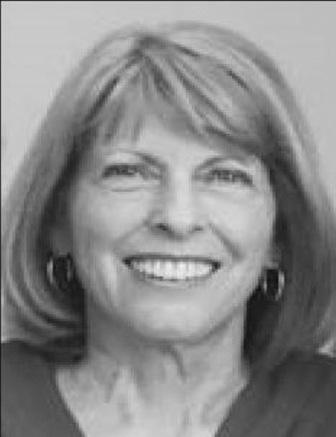
From the beginning, officials focused their suspicions on Sam, and to some, the circumstances warranted it. The excessive number of blows suggested an enraged husband rather than an intruder. While the position of Marilyn’s pajamas implied a sexual assault, there was no evidence of one, her pajamas were unbuttoned rather than ripped, and the position of her legs between the horizontal foot rails of the bed made a sexual assault impossible. The house had the appearance of having been ransacked, but “tidily,” with drawers pulled out of desks and carefully stacked on the floor, rather than thrown about. Sam’s shotguns were not taken. There were no signs of forced entry to the home, and nothing of value was missing, suggesting a staged burglary. There were no signs of a struggle on the beach. Sam was barechested and his shirt was missing, perhaps to hide bloodstains. And the family dog, Koko, had not barked. The coroner, Dr. Gerber, is reported to have told his men, “Well, it is evident the doctor did this, so let’s go get the confession out of him.” Later that afternoon, the Cleveland police interrogated Sam at some length, at the end of which an officer told him, “I think you killed your wife.”7
The Cleveland press followed soon after the police, and the frenzy began. Incredibly, they were given free roam of the house that morning, and photographers were even allowed into the bedroom while Marilyn’s body still lay there.8 The media coverage was immediate and overwhelming. Over a period of six months, the Cleveland Press printed 399
articles about Sam and the death of Marilyn.9 Newspapers in Cleveland printed editorials demanding that the coroner call an inquest and subpoena Sam to testify. Smarting from the challenge, Dr. Gerber commenced the inquest the next day in the gymnasium of Normandy High School in Bay Village, and the three-day session was filled with public spectators, press, and high drama. In the front of the room was a long table occupied by reporters, television and radio personnel,
and broadcasting equipment. Microphones were placed in front of the coroner and on the witness stand. Crowds lined up outside the school to get seats, and reporters and photographers chronicled all of the testimony. For the first two days, Coroner Gerber elicited the testimony of police officers, family members, and neighbors, including the sixteen-year-old son of Mayor Houk, who
January–February 2023 | San Antonio Lawyer® 15 Earning the trust of trial lawyers and their clients for over 20 years. Access to an experienced settlement planner working to maximize settlement dollars and protect assets Opportunity for face to face meeting with settlement professional with knowledge of: college costs, inflation rates, retirement expenses, Special Needs, Minor’s and Spendthrift trusts, Social Security Disability, Medicaid, Medicare Set Aside Trusts, Qualified Settlement Funds and Life Care Plans Follow-through after settlement We believe every client should have: Consider Structured Settlement Annuities for: Personal Injury Product Liability Medical Malpractice Legal Malpractice Breach of Contract Disability Construction Business Buy-Outs Transactional Litigation Family Law Structured Attorney fees payable to the attorney or the law firm produce healthy rates of return with tax deferral that are protected from creditors (attorneys can structure their fees even if the client does not). DAVIS SETTLEMENT PARTNERS The Attorney’s Indispensable Partner in Settlement Planning Carola M. Davis, CFS 830.609.5555 cmdavis388@gmail.com www.DavisSettlementPartners.com Employment Sexual Harassment Attorney Fees Punitive Damages Environmental Carola M. Davis, CFS NOW IS THE TIME TO LOCK-IN 5% + ANNUITY RATES…!
continued on page 16
with other local teenagers had been enlisted by the police to help search the lakefront yard of the Sheppard home.
On the third day of the inquest, Sam was called to testify in the gymnasium full of spectators. Before a swarm of reporters and photographers, he was brought into the room by police and searched in full view of the spectators, who by then numbered several hundred. Sam’s attorneys were present during the three-day inquest, but they were not permitted to participate. When his principal attorney, William J. Corrigan, attempted to place documents into the record, he was forcibly ejected from the gymnasium. “Remove him,” the coroner ordered, and Corrigan was hauled from the gymnasium while cameras rolled. The Cleveland Plain Dealer reported on its front page: “Spectators cheered wildly yesterday as William J. Corrigan, criminal lawyer representing Dr. Samuel H. Sheppard, was half dragged from the room in the closing moments of the Marilyn Sheppard murder inquest in Bay Village.”10 Afterwards, the Coroner received hugs and kisses from ladies in the audience.11
At the inquest, Sam made the mistake
that would haunt him at trial: he denied his extramarital affair with Susan Hayes. Hayes was a lab technician at Bay View Hospital, who had left in 1953 to move to California. Officers quickly tracked her down, and after first denying her relationship with Sam, she later admitted all—the officers suggesting that if she did not do so, she would face criminal charges for adultery, then still a crime in Ohio.12 Susan described the affair to officers, including her many sexual encounters with Sam in his car, in the Bay View Hospital, and on his visits to California. All became fodder for the newspapers.
Media coverage continued to do more than report the case, instead influencing and even directing the course of the administration of justice. Just as the Cleveland papers had compelled the coroner to hold the inquest, now the same papers demanded in front-page editorials to know why Sam was not jailed. The Cleveland Press, in a front-page editorial headlined “Why Isn’t Sam Sheppard in Jail?” demanded action against Sam:
A murder has been committed. You know who the chief suspect is. You have the obligation to question him—question him thoroughly and searchingly—from beginning to end, and not at his hospital, not at his home, not in some secluded
spot out in the country. But at Police Headquarters—just as you do every other person suspected in a murder case. What the people of Cuyahoga County cannot understand, and The Press cannot understand, is why you are showing Sam Sheppard so much more consideration as a murder suspect than any other person who has ever before been suspected in a murder case.13
In response, police arrested Sam late that night at his father’s house. He was taken to the Bay Village City Hall where, despite the hour, hundreds of people, reporters, and photographers were waiting. He was immediately arraigned, denied a delay to secure presence of counsel, and bound over to the grand jury.14
Mark J. Phillips is a shareholder at the law offices of Lewitt Hackman in Encino, California. Aryn Z. Phillips, Ph.D. is an assistant professor at the University of Maryland at College Park. Mark and Aryn are the co-authors of Trials of the Century (Prometheus 2016).




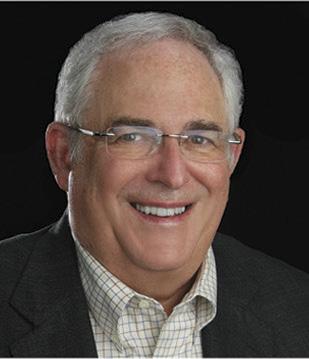
ENDNOTES
1Cynthia L. Cooper and Sam Reese Sheppard, Mockery of Justice 68 (New York: Onyx 1997).
2Jack P. DeSario and William D. Mason, Dr. Sam Sheppard on Trial 19, 78 (Kent, Ohio: Kent State University Press 2003). DeSario teaches political science and has a law degree. Mason successfully defended the State of Ohio against the suit brought by Sam Reese Sheppard to clear his father’s name.
3Cooper & Sheppard at 26.
4Sheppard v. Maxwell, 231 F. Supp. 37 (S.D. Ohio 1964).

5Sheppard v. Maxwell, 384 U.S. 333, 336-37 (1966)
6Id. at 337.
7Id.
8Cooper & Sheppard at 61.
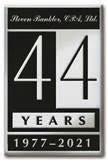
9Id. at 9.
10John G. Blair, “Corrigan Ejected Amid Cheers,” Cleveland Plain dealer, July 27, 1954.
11Sheppard, 384 U.S. at 340; Cooper & Sheppard at 86; Blair at 5.
12Cooper & Sheppard at 93.
13Editorial, “Why Isn’t Sam Sheppard In Jail?” The Cleveland Press (July 30, 1954).
14Sheppard, 384 U.S. at 341.
16 San Antonio Lawyer® | sabar.org
Suite
www.bankler.com When business partners separate...it’s like a divorce. Providing business exit strategy (planning) and forensic accounting (damage control) in disputes over death, business “divorce” and succession. 44 years of experience assisting business owners, lawyers, judges and juries with complicated accounting and tax matters. The Colonnade 9901 IH-10 West
670 San Antonio, TX 78230 210.691.3133 And,inmanyinstances,thereisnoclearpre-nup. “When I explain it, they understand it.”
continued from page 15
These Three Words Part III
By ileta! A. Sumner 1
Author’s Preamble: You cannot change that about which you know nothing. You cannot address that which you do not see. You cannot ignore what is in your face.
BLACK LIVES MATTER

Insure Domestic Tranquility Over the past decade, the Black Lives Matter Movement (BLM) has shone a virtual Klieg light on the horrors of the American policing system that have persisted for centuries. Starting as a small, grass roots organization, originally comprised primarily by people of color who were tired of the same deleterious procedures that were followed by denials of wrongdoing or lip service of change, it now includes an international rainbow of advocates, many publicly expressing themselves for the first time. Now, the echoes of distraught calls and protests for accountability and reform are changing the narrative of how neighborhoods serving people of color could be protected, producing one of the largest, most diverse, and most successful civil rights exercises this nation and the world have witnessed. A survey of some of BLM’s activities will begin to show how and why this metamorphosis can ameliorate relations between authorities and our nation’s citizens.
Any Means Necessary. Once #BlackLivesMatter was established in 2013 after yet another incident in which no one was held accountable for the death of a Black youth, people first took to the streets in passive resistance. But there was an undeniable grumbling of discontent with the growing number of negative interactions between mostly Black men and figures of authority. Activists began demanding data, videos, and records to verify rhetoric that any abusive tactics were few and far between, and the “few” that did occur were handled judiciously.
One thing the protestors wanted explained
was how and why the number of unarmed Black people who expired due to a chokehold performed by police was underreported practically everywhere. Supervisors in favor of such a tactic say that it is an exigent means of subduing a perpetrator. The chokehold is often performed improperly, however, leading to an unnecessary death.
There are two methods of restraining a person via putting pressure on the neck: There is the actual chokehold that blocks the airway and restricts breathing; in addition, there is the carotid hold that limits the blood flow to the brain. While police leaders proclaim that officers are trained to keep belligerent suspects safe when these approaches are put to use, even a police surgeon with the Louisville Metro PD, Bill Smock, said that the “holds” are, in a word, “strangulation.” Furthermore, he personally knew of three officers who suffered strokes during training on this technique because it is simply a perilous tactic.
Despite the fact that chokeholds were fraught with danger, their use was continuing to escalate. BLM drew the hypothesis that the use of these dangerous holds was escalating not from standardized evidence from the 18,000 police departments across the country, but rather, from the growing number of smartphone videos taken at the time of the offense by onlookers and immediately disseminated throughout the nation.
The Perfect Storm. The world was in a quiet panic. A pall of death enveloped the earth. We were each alone, together. Whatever the creepiness was that had imprisoned every citizen on this planet in her own abode barely
had a name, did not have a cure, and was indiscriminately killing anyone, everyone… and little did the world know, was only the beginning of the worst pandemic in generations.
It was into this scenario that George Floyd entered into our lives. A 46-year-old Houston native, Floyd had struggled with the police coming and going throughout his life. However, on May 25, 2020, this gentle, kind man—as he was described later by those who knew him—was in decent enough spirits. Until he wasn’t.
Worldwide, there was nowhere to go, except to another room in one’s home. One of the few activities available to most of the citizens of the world was to watch a screen, a television, a desktop computer, a laptop, a tablet or, a phone—and the sight to behold on those screens was incomprehensible. Extraordinarily, what was on every channel, every platform, for every hour of May 25, 2020, and for months to come was what looked like a photo frozen in time, for no one was moving: Not the bystanders, not the person lying prone on the ground, and definitely not the man in the uniform, seeming to be posing defiantly, daring anyone, ANY ONE, to tell him or force him to move.
Yes, Derek Chauvin was posturing like a man positive that his actions were not only necessary, but imperative. If they were not, would not one of the three police officers who accompanied him have done something? Apparently not, for former Officer Chauvin maintained that recalcitrant pose, his knee on George Floyd’s neck, for an entire 9 minutes and 29 seconds, a good two minutes after another officer meekly reached for Floyd’s arm and could not detect a pulse. There he remained while Floyd called for his mother, made utterances of not being able
January–February 2023 | San Antonio Lawyer® 17
to breathe, and that he was going to die, over and over until medical first responders arrived to do what the actual first responders failed to do: try to resuscitate and give aid to a man past the stage of distress.
By now, most of us know the repercussions of Chauvin’s actions. Instantaneously, hundreds of thousands of people, all over the world, took their anger to the streets. Anger was in them not just from the actions of that day, but from what had been building up for at least the two months since the WHO and the CDC declared the unknown disease that made the world come to a screeching halt a “pandemic,” that made them just want to scream! More importantly, it gave them something to do that could affect more people than could be counted.

Hence, masks were hurriedly slapped on, handmade signs were held aloft, and voices in all languages lifted for miles, crying over the injustice of the American justice system. Ignoring the demands of the rulers of their countries, many international citizens marched to the American Embassy in their country in conspicuous support of BLM. One woman, Victoria Weakerly, a 42-year-old woman in London, announced, “I’m social distancing from my white privilege,” feeling it was “more important to show solidarity with
BLM than worry over spread of a virus.”

The 9 minutes and 29 seconds of Floyd’s encounter with the police went viral, shown and replayed on platforms everywhere. There were pictures of marches on Facebook, videos on YouTube; persons shared their views on Twitter, Instagram, and Snapchat, as well as any other application within reach. Fundamentally, within hours of the occurrence, every single person alive could have had a chance to see what had transpired, review it, share it, and if their stomachs could stand it, watch it all over again.
This is quite different from how word spread that Rodney King been beaten just short of his life by four Los Angeles policeman. That, too, was captured on video, but the technology made the videotape grainy. Also, at that time, there were only three main television channels, along with the Public Broadcasting Network, which limited how often the video could be shown.
The different official reactions following these two incidents also highlight the effectiveness of the BLM movement in raising awareness about police brutality on people of color. Before the officers could even be indicted, they were each fired the day after Floyd died. The original jury in the trial of the officers accused of assaulting Rodney
King was predominantly white, but the jury in Chauvin’s trial was even more diverse than the county in which the trial was held. The sentences imposed on the two officers who were eventually found guilty in the King beating were laughable at best: each was sentenced to thirty months, approximately eight levels below what the Federal Sentencing Guidelines provided. They could have been given a punishment from seventy to eightyseven months in prison. Instead, the judge considered the following to be controlling as to why they should be treated with leniency:
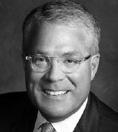
1. The sentences were cut due to King’s misconduct.
2. The officers would be susceptible to abuse while in prison.
3. Both officers would lose their jobs.
4. Each officer had been prosecuted in both state and federal court; and
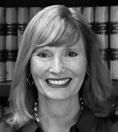
5. They were unlikely to be repeat offenders.
By contrast, in Chauvin’s case, Judge Peter Cahill applied a test to see if five aggravating factors were applicable, for if they were, it would be grounds for an even harsher sentence. Remarkably, the judge found that four out of the five factors could be applied:

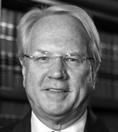
1. Chauvin abused a position of trust and authority;
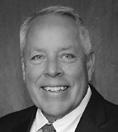
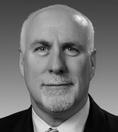
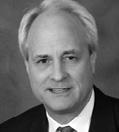

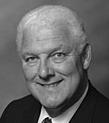
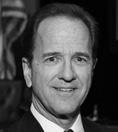
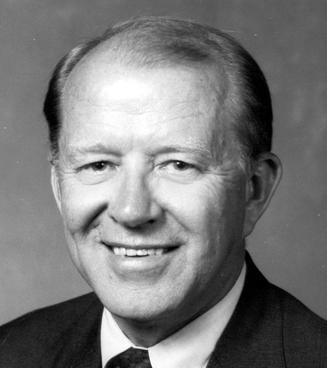
2. Chauvin treated Floyd with particular cruelty;

18 San Antonio Lawyer® | sabar.org
TEXAS CHAPTER MEMBERS IN SAN ANTONIO
Joseph CASSEB
Don PHILBIN
Wade SHELTON Thomas SMITH Hon. John SPECIA, Jr. Hon. Phylis SPEEDLIN
Dan POZZA
John BOYCE
Check preferred available dates & schedule online in seconds - for FREE Visit our TX Chapter at www.TexasNeutrals.org Visit our National Database of over 1000 top litigator-rated neutrals at www.NADN.org
Roberto RIOS
Roger BRESNAHAN
Gary JAVORE
Hon. Catherine STONE
Hon. Karen POZZA
3. Chauvin carried out his heinous actions in the presence of minors; and
4. The killing was committed in a group with active participation of at least three others.
Judge Cahill found the fifth factor (that Floyd was “particularly vulnerable”) inapplicable because Floyd resisted arrest.
Cheers of relief roared when an announcement was made that Chauvin was convicted on all charges and later sentenced to over twenty-two years by the state court, as well as twenty-one years by a federal court. The findings of the aggravating factors guarantee that Chauvin will serve his entire sentence. However, he will be within the federal system which is a bit more lenient than the state system, and he will not have to spend all of his time in solitary confinement for his protection. It seems he is being given more consideration than he ever gave to Floyd. Likewise, the other three officers involved were found guilty in federal court and sentenced to terms ranging from thirty to forty-two months.
Defund/Refund the Police. BLM originally was serious in its intentions to defund police departments as they exist now. These activists believed that departments needed to be torn down to eradicate the hatred and the lack of accountability that is so deeply entrenched. To this faction of the BLM move-
ment, it seemed inane to select a few changes and expect the entire empire to resurrect humanely. The role models to which they were turning were the countries in Europe, like the UK, where very few of the officers carry a weapon. Still, even BLM had to admit that the European model might not be a good fit here in the United States.
Instead, they are now proposing to “refund” the police—to redistribute funds from police department budgets to ancillary services so that police will not encounter as many situations that escalate to the point that unarmed Black people are killed. One example already in existence is the CAHOOTS program (Crisis Assistance Helping Out On the Streets) in Eugene, Oregon. This system requires that a psychological professional be the first person to arrive when a mental health call comes in. Armed police arrive only as secondary help and only if needed. The CAHOOTS program proves that it is not too difficult to have psychological professionals at the ready on the front lines with first responders.
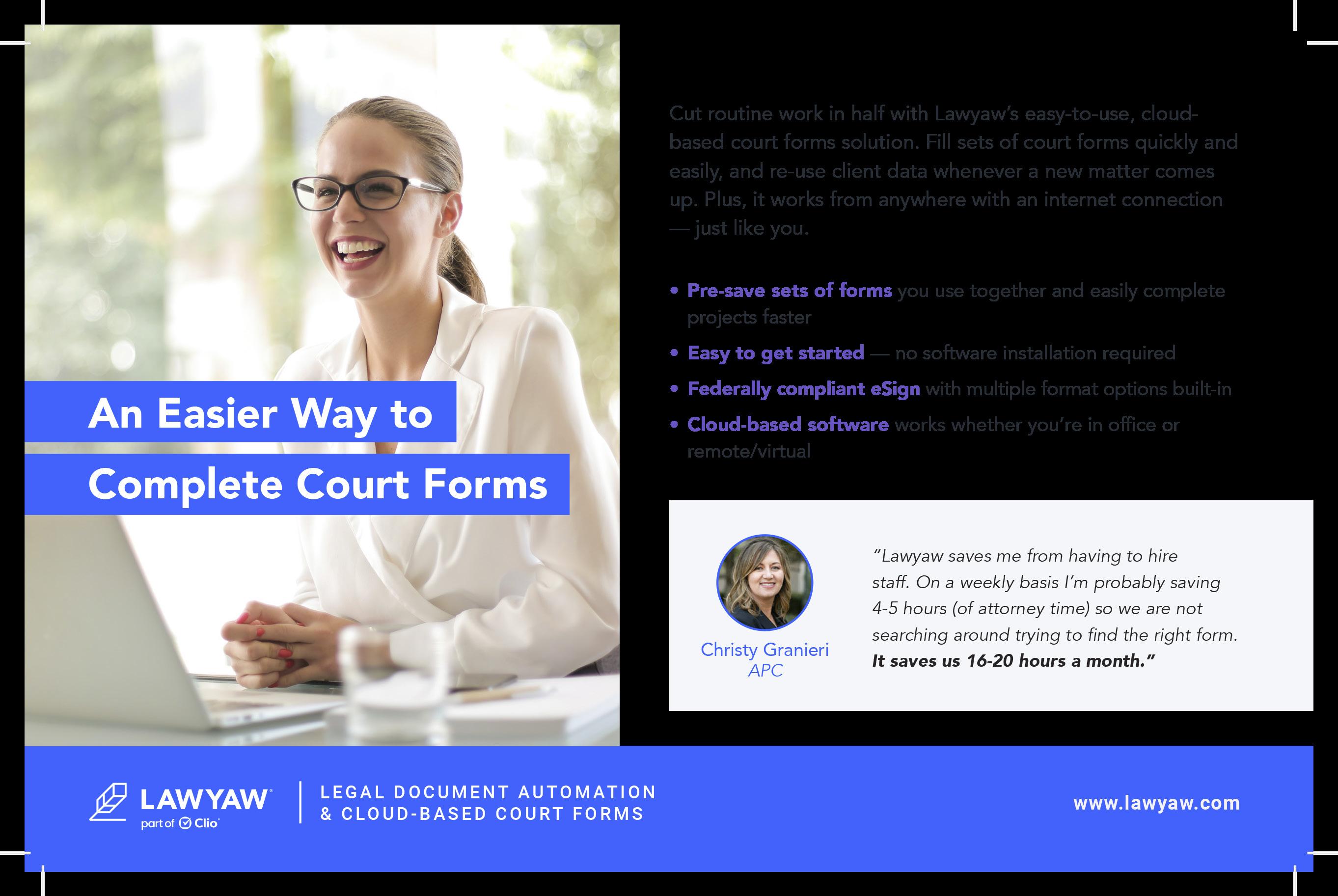
This is 911/This is 988. Other mental health concerns surround who determines the type of case for which assistance is needed and to whom the call should be forwarded. A large number of unarmed Black people who have been killed by police are those in the middle
of a mental health crisis. In 2020, the Federal Communications Commission designated 988 as a nationwide number for mental health crises and suicide prevention services. Not only would medical professionals be the first responders to the site of the call, but people well versed in various techniques for calming a person who is on the spectrum (many persons with this condition cannot be touched—a person attempting to handcuff such a person could cause more trauma than assistance) could be the intake representative who would know to whom the call should be forwarded. BLM has fought for this for years, and it went live in July 2022.
No Knock Warrants. After Breonna Taylor was killed when the police botched the execution of a “No Knock” warrant at her home, Louisville, Kentucky, passed “Breonna’s Law,” which bans no-knock warrants. Both Oregon and Florida had such laws in place before 2020. Virginia, Wisconsin, New Mexico, Columbia, Ohio, and Pomona, California, are just a few of the other places where BLM is trying to get Breonna’s Law passed. As a result of BLM spurring on the people in power, there are over eighty-four proposals in thirty-three states.
The Take Away. Before he died in July 2020, lifelong civil rights leader and the last continued on page 20
January–February 2023 | San Antonio Lawyer® 19
living speaker from the March on the Mall in Washington on August 28, 1963, the Honorable John Lewis, told believers in the Black Lives Matters movement to Never Give Up. He told us to Speak Up. Speak Out. Get in the Way! That is the only way to make a lasting change. The ultimate meaning of those words is to do what the lifelong civil rights advocate deemed making “Good Trouble.” As one of the icons of the original Civil Rights Movement, Lewis saw BLM as the successor movement and—with continued diligence, patience, and the addition of new people with endurance—it just might do what his generation was not able to do: Secure a change that will last, for Black Lives Matter.
ileta! A. Sumner, esq. is a former President of the Bexar County Women’s Bar (2002) and the original General Counsel and creator of the legal department of the Battered Women’s and Children Shelter, work for which she received the San Antonio Bar Foundation’s 2022 Peacemaker Award. She has been

disabled since 2006. She can be reached at (210) 421-2877 (cell), litig8rij@aol.com
SELECTED BIBLIOGRAPHY
Kimberly Kindy, Kevin Schaul, and Ted Mellnik, “Half of the nation’s largest police departments have banned or limited neck restraints since June,” Washington Post, updated September 6, 2020,https://www.washingtonpost.com/graphics/2020/national/police-useof-force-chokehold-carotid-ban/
“Fatal Police Violence by Race and State in the USA, 1980-2019: A Network meta-regression,” The Lancet, Vol. 395, Issue 1037, 1239-55, October 2, 2021, https://www.thelancet.com/journals/lancet/article/ PIIS0140-6736(21)01609-3/fulltext#seccestitle170
Priscilla DeGregory & Craig McCarthy, “Ex-cop Daniel Pantaleo loses bid to get NYPD job back,” New York Post, March 25, 2021, 12:42 p.m. updated, https:// www.usatoday.com/story/news/nation/2019/08/02/ eric-garner-nypd-chokehold-death-judge-fire-copdaniel-pantaleo/1900251001/.
Derek Major, “U.S. Cities are changing how traffic stops are conducted as black drivers are disproportionately affected,” Black Enterprise, May 26, 2022, https://www.blackenterprise.com/u-s-cities-arechanging-how-traffic-stops-are-conducted-as-blackdrivers-are-disproportionately-affected/
I t ’ s s ettled
Larry Buchanan, Quotrung Bui, and Jugal K. Patel, “Black Lives Matters May be the Largest Movement in US History,” New York Times, July 23, 2020, https:// www.nytimes.com/interactive/2020/07/03/us/ george-floyd-protests-crowd-size.html
“Three Former Minneapolis Police Officers Convicted of Federal Civil Rights Violations for Death of George Floyd” DOJ, Office of Public Affairs, Thursday, February 24, 2022, https://www.justice.gov/opa/pr/ three-former-minneapolis-police-officers-convictedfederal-civil-rights-violations-death
Adrian Florindo, “Half of the Jury in the Chauvin Trial is Non-White. That’s only Part of the Story,” NPR, Live Updates, Trial Over George Floyd’s Killing, March 25, 2021, 9:00 AM, ET, https://www.npr. org/2021/03/25/980646634/half-of-the-jury-inthe-chauvin-trial-is-non-white-thats-only-part-ofthe-story
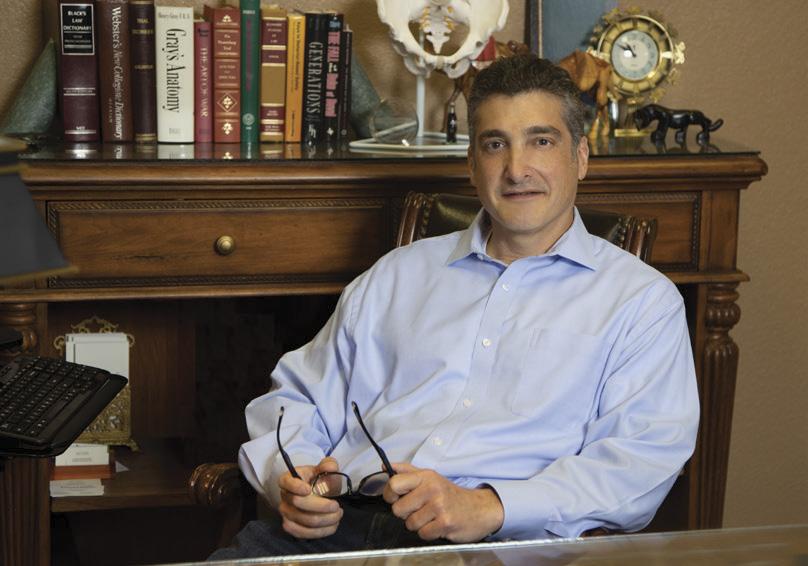
Steve Karnowski | AP| “Derek Chauvin Gets 21 Years in Federal Prison for George Floyd’s Civil Rights Charges,” Time, July 7, 2022, 4:54 EDT, https:// time.com/6194760/derek-chauvin-federal-chargesgeorge-floyd/
Eric Levenson, “Judge’s ruling allows for longer sentence – Derek Chauvin in murder of George Floyd,” CNN, Updated 11:22 AM, ET, Wednesday, May 12, 2021, https://www.cnn.com/2021/05/12/us/derekchauvin-george-floyd-factors/index.html
Jeloni Cobb, “Derek Chauvin’s Trial & George Floyd’s City,” The New Yorker, July 5, 2021, https://www. newyorker.com/magazine/2021/07/12/derekchauvins-trial-and-george-floyds-city.
Elisa Shearer and Amy Mitchell, “News Use Across Social Media Platforms in 2020,” Pew Research Center, January 12, 2021, https://www.pewresearch.org/ journalism/2021/01/12/news-use-across-social-media-platforms-in-2020/
Brakkton Booker and Rachel Treisman, A Year After Breonna Taylor’s Killing, Family Says There is No Accountability: America Reckons with Racial Injustice, NPR, March 13, 2021, https://www.npr. org/2021/03/13/973983947/a-year-after-breonnataylors-killing-family-says-theres-no-accountability.
Sanya Monsoor, “93% of Black Lives Matters Protests Have Been Peaceful New Report Finds,” Time, September 5, 2020, 11:47 a.m. EDT, https://time. com/5886348/report-peaceful-protests/
“Demonstrations and Political Violence in America: New Data for Summer 2020,” ACLED, https://acleddata.com/2020/09/03/demonstrations-political-violence-in-america-new-data-for-summer-2020/.
Rashawn Ray, “How We Rise – Five things John Lewis taught us about getting in ‘Good Trouble,’” Brookings, July 23, 2020, https://www.brookings.edu/blog/ how-we-rise/2020/07/23/five-things-john-lewistaught-us-about-getting-in-good-trouble/.
20 San Antonio Lawyer® | sabar.org
Certified in Civil Trial Law* **
Legal
(TBLS)
(NBTA)
Rated Texas
every year since 2009
all types of civil litigation cases from pre-lit to post verdict since 2007. To schedule an in-person or virtual mediation, visit the calendar at www.KatzmanAndKatzman.com/adr-mediation/ or call 210.979.7300
Alex Katzman Resolving Cases Delivering Results Board
*Texas Board of
Specialization
**National Board of Trial Advocacy
AV
Super Lawyer:
Mediating
continued from page 19
Daniel Webster

1782–1852
By Harry Munsinger
Daniel Webster was born January 18, 1782, in Salisbury, New Hampshire, in a house his father built.1 His mother and sisters taught him to read at such an early age that he had no memory of being unable to read. Daniel enrolled in Phillips Academy and studied grammar, arithmetic, and writing. He developed the habit of reading for half an hour and then trying to recall important passages he had just read. Webster later said the habit helped him recall a case or fact during trial. In 1797, he lived with Dr. Samuel Wood, the minister of an adjoining town, where he received private tutoring in Latin to prepare for college.
After months of tutoring, Dr. Wood told Daniel he was ready to enter Dartmouth College, which required passing a test in English writing, translating English into Latin, and using basic arithmetic. Daniel did well in English writing but barely passed Latin and math. Nevertheless, Dartmouth College admitted Daniel due to Dr. Wood’s strong recommendation. At Dartmouth, Daniel studied Latin, Greek, English grammar, rhetoric, and critical thinking, and joined a debating society.2 When he graduated, he was the best speaker on campus. He earned good grades and was elected to Phi Beta Kappa. When the trustees of Fryeburg Academy in Maine offered Daniel a job teaching, he accepted because he needed the money. The
trustees were happy with Daniel’s work and offered to double his salary if he would stay for a second term.
Daniel, however, wanted to study law, so he began searching for an attorney to take him as an assistant. He approached Christopher Gore, one of Boston’s most prominent attorneys. At the end of the interview, Daniel asked Gore if he could become his clerk and study law. Gore replied that he only wanted to take on one or two clerks. Daniel took that response as a rejection and started to leave, but Gore said, “Wait, hang up your hat, go into the next room, and begin studying— you can stay.” Daniel worked in Gore’s law office for two years, studying cases, drafting contracts, and attending state supreme court sessions. Gore wrote a strong letter supporting Daniel and introduced him to judges of the Suffolk Court of Common Pleas. Based on Gore’s strong support, the judges admitted Daniel to the bar without his having to pass an examination.3
Daniel established a law practice near his father’s farm in Boscawen, a small New England town, because his father was ill. Daniel wanted to be close during his father’s last years. He practiced law in Boscawen for two years before his father died. Daniel asked his brother to take over his law practice so he could move to Portsmouth and open an office. In Portsmouth, Daniel met and fell in love with Grace Fletcher.4 After establishing
his law practice and becoming economically successful, Daniel asked Grace to marry him. Grace accepted, and the couple married on May 29, 1808, returned to Portsmouth, and bought a small house. Although Daniel’s earnings increased, he was constantly in debt from overspending. He became interested in politics and decided to run for the United States House of Representatives from New Hampshire.
Congressman Webster
Daniel Webster ran for a seat in the House of Representatives as a Federalist and won, even though Republican James Madison was elected to a second presidential term by winning the South and many Middle Atlantic states. When Webster entered Congress, the War of 1812 had been going on for a year, and it was a disaster. The British invaded America and were winning battles on land and sea.5 The American invasion of Canada failed, and the United States lost control of Lake Champlain. The English blockaded the entire eastern coast of America below New York City, hoping New England manufacturing states would secede from the Union, but the plan failed.
Webster’s political career helped him by attracting wealthier clients, and his law practice prospered. As Webster became more prominent in legal circles, he began practicing before the United States Supreme Court. He argued over two hundred cases before the
January–February 2023 | San Antonio Lawyer® 21
FAMOUS LAWYERS IN AMERICAN HISTORY
Court. His first appearance before the Court was an admiralty case, The Grotius.6 He won the case for his client. Webster continued to enjoy victories for his clients. His speeches and bills in the House of Representatives forced President Madison to repeal the embargo against Great Britain so that Northern merchants could resume trading with England.
Webster prepared for reelection to the House on a platform of making peace with the British. Republicans attacked Webster as unpatriotic, but Webster won another term representing New Hampshire. The British invaded Washington, D.C., and burned the White House. When Congress and the President moved back to Washington, D.C., they discovered it would cost a fortune to rebuild burned buildings, and the war was not over. The United States Government faced a financial crisis; it needed to raise taxes and find a way to borrow money to continue the war. The National Bank charter had expired in 1811 and was not renewed because of opposition from Thomas Jefferson and James Madison. Because the country needed money to support the war, Republicans wanted to establish a new National Bank. However, the Republican bank bill failed in Congress, so Webster drafted his own bank bill, which passed with a large majority.
The Dartmouth College Case
At the end of his second term in the House, Webster moved his practice to Boston, where he accepted corporate and criminal cases and made a name for himself. Shortly after moving to Boston, Webster received a letter from the President of Dartmouth asking him to represent the college in a dispute with the State of New Hampshire—Trustees of Dartmouth College v. William H. Woodward 7 The case was an important one in American legal history because it clarified the Contract Clause of the United States Constitution.
The case began when the New Hampshire legislature passed a bill to take control of Dartmouth College, increase the number of trustees, and change its name to Dartmouth University. The original college trustees refused to recognize the legislature’s actions and sued in state court. Webster argued the case before the state’s superior court, where three Republican judges upheld the state legislature’s actions, ruling that Dartmouth College was a public institution subject to state regulation. The trustees immediately appealed to the United States Supreme Court. When the case came before the Supreme Court in March 1818, Webster spoke for four hours, laying out the issues that would make the case
a classic one in American jurisprudence. He argued that the issues involved constitutional principles of private property and contract law because Reverend Wheelock had originally founded the school on his own land at his own expense, and therefore the college was private and not a public institution.
Webster’s argument that the original charter established Dartmouth College as a private corporation meant that the dispute involved a contract, and the contract clauses of the United States and New Hampshire Constitutions protected private contracts from government interference. The Supreme Court ruled in favor of the Dartmouth College Trustees, holding that the royal charter established a private corporation, and Dartmouth College was not subject to legislative regulation by New Hampshire. The Dartmouth College case limited the powers of a state to regulate private corporations, allowing entrepreneurs great latitude to grow their enterprises without state regulation.
McCulloch v. Maryland
Webster’s next United States Supreme Court case—McCulloch v. Maryland concerned the legality of the Second Bank of the United States.8 The case began in 1819 when Maryland imposed a tax on notes issued by the Second Bank of the United States. McCulloch, manager of the Maryland branch of the Second Bank of the United States, refused to pay the tax and was convicted of violating state law. He appealed his conviction to the United States Supreme Court.
Webster represented McCulloch and raised two issues before the Court: does the federal government have the power to charter a national bank, and does a state have the power to tax a federal bank? The Court held that even though Article 8 of the Constitution does not explicitly give the federal government power to charter a national bank, it gives Congress “all necessary and proper” powers to carry out its express powers; thus, establishing a national bank is legal under the United States Constitution. Maryland argued that even if the national bank is legal, the state still had the power to tax any entity within its borders. The Court disagreed, explaining that the power to tax is the power to destroy, so states have no authority to tax a national bank because that would destroy the supremacy of the federal government.
The Great Steamboat Case
Webster’s next case involved the regulation of interstate commerce. Gibbons v. Ogden, decided in 1824, stood for the doctrine
that Congress’s power to regulate interstate commerce includes the right to regulate navigation on United States waterways.9 Gibbons and Ogden were partners in a steamboat venture moving passengers between New York and New Jersey. They disagreed about business matters, and Gibbons established a competing steamboat company. Ogden sued Gibbons in state court and won an injunction against the new company. Webster appealed the judgment to the United States Supreme Court and raised two issues: does Congress have the power to regulate navigation, and can the federal government regulate navigation within the waterways of New York?
Webster argued that federal authority to regulate interstate commerce is comprehensive, and a state court cannot overrule the federal government’s authority because of the Supremacy Clause of the United States Constitution. The Supreme Court reasoned that a restricted reading of the United States Constitution would cripple the federal government’s power to regulate interstate commerce, and that Article 1 of the United States Constitution gives Congress broad powers to regulate interstate commerce, including navigation on state waterways. The Court explained that the federal government can regulate interstate commerce wherever commerce exists.
Senator Webster
When Webster returned to Massachusetts, his friends suggested that he run for the United States Senate. Although Webster thought running for senator was premature because Andrew Jackson would likely defeat President John Quincy Adams, he kept his options open by working to elect Adams to another term. In 1827, the Massachusetts legislature elected Webster as a Senator from Massachusetts because of his strong support for Adams, who eventually lost the election of 1828 to Jackson. Following his election to the Senate, Webster spent his summer at the Massachusetts shore with his wife Grace because she had been ill for the past year. Webster wanted Grace to recover before returning to Washington.
In November, the family left for Washington and ran into bad weather. Grace became ill. The family stopped in New York where a surgeon told Webster that Grace would not likely survive because she had developed a cancerous tumor. Grace died on January 21, 1828.10 Upon arrival in Washington, Webster had difficulty concentrating because he was depressed by Grace’s death. After a few weeks, his mood began to improve, and he argued in
22 San Antonio Lawyer® | sabar.org
favor of a tariff bill to protect American infant industries from foreign competition.

Webster soon began seeing Sarah Goodridge, a miniaturist who had painted his portrait. Rumors of Webster’s sexual involvement with Goodridge circulated throughout Washington, and his enemies accused him of being a drunk and having a black son. To protect his reputation, Webster married Caroline LeRoy, second daughter of Herman LeRoy, a wealthy New York merchant, approximately two years after Grace died.11
The Webster-Hayne Debate12

Webster decided to debate Senator Hayne in an effort to raise his political profile. Webster began the debate by asking whether public land sales should be a source of revenue for the federal government or sold at a discount to attract settlers to the Western territories. Webster favored selling public lands at affordable prices, but his hidden agenda was to argue against slavery and the right of a state to secede from the Union. He wanted to run for President by attacking slavery, which was a popular position in New England. Webster reminded his listeners that the Northwest Ordinance of 1787 forbade introducing slavery into land northwest of the
Ohio River.13 By raising the issue of slavery, Webster could discuss a popular issue in New England that was bound to make him an attractive candidate.
Hayne argued that slavery was permissible because states retained all rights not specifically granted to the federal government in the United States Constitution, and the system benefitted enslaved people because they were supported and provided for. Hayne maintained that the issue of states’ rights was not a threat to the Union but a way to preserve it. Webster argued that slavery is inherently evil, but slave-holding states must abolish slavery themselves because the federal government lacked authority to emancipate enslaved people. Webster’s speech was well received among northern states but not in the southern states.
The National Bank Issue
Nicholas Biddle, president of the Second Bank of the United States, wanted the bank’s charter renewed immediately because he believed Jackson would not oppose the bank during a presidential campaign. Webster pushed the bank bill through the Senate, arguing that the Second Bank of the United States should be re-chartered
because it had established American finances on sound footing and supported American manufacturing. After six months of intense debate, the bank bill passed, but Jackson vetoed it. Webster warned that if the bank closed, outstanding loans would be due and cause serious financial distress to the country, but the Senate was unable to override Jackson’s veto.
Charles River Bridge Case14
In 1828, Massachusetts chartered a company to build a new bridge parallel to the original Charles River bridge and authorized the bridge company to charge tolls until it recouped construction costs. Investors in the original bridge hired Webster to challenge the legality of building a competing bridge. Webster argued that the original charter was a property right the government could not abridge without compensation. However, Webster faced a hostile Supreme Court, because Jackson had nominated, and the Senate had confirmed, several Republican Justices during his prior term.
Because of the shift in political attitude on the Court, Webster urged his clients to
January–February 2023 | San Antonio Lawyer® 23
Angela Barker RN, BSN, LNC 100% Risk Free Guarantee with work product If you have a case involving health, injury or illness, Phone: (409) 263-1538 Email: anbarker@CovenantLNC.com Website: www.CovenantLNC.com Professional Services include: A Legal Nurse Consultant Why Hire a Legal Nurse Consultant (LNC)? • Screening cases for merit • Summarizing and interpreting medical reports • Defining deviations from and adherence to the standard of care • Determining if injuries sustained were a direct result of the incident or an exacerbation of a preexisting condition • Identifying factors that caused or contributed to the alleged damages/injuries • Locating expert witnesses • And much more Call in the Expert. It’s what we do! - efficiently deciphers healthcare language and identifies important missing elements which saves you time - has the expertise to thoroughly review medical records, provide summaries and perform research at the fraction of the cost of a MD - can evaluate all of the evidence to form an opinion as to causation and damages, which can help develop the overall case theory and strategy. continued on page 24
compromise, but they refused, so he had to take the case before a hostile Supreme Court. Webster argued that issuing a new charter could not damage private property rights because that would violate the state constitution. The Supreme Court handed down a four-to-three decision, declaring that Webster’s clients did not have an exclusive right to build bridges over the Charles River, and that a second charter to build a competing bridge was constitutional. The Charles River Bridge case recognized that public rights are superior to private property rights—a victory for Jacksonian Democracy—but a loss for Webster, his clients, and business owners in general.
Missed Opportunity to be President

Webster passed up a golden opportunity to become President during Harrison’s second term, when he declined Harrison’s request to run as his Vice President in 1840. President Harrison died shortly after taking office, and Vice President Tyler became President. Webster must have anguished over seeing Tyler become President instead of him. After the 1840 election, President Harrison asked Webster to serve as
Secretary of State. Webster accepted because he felt the office would help his campaign for President next time.
The Webster-Ashburton Treaty15

As Secretary of State, Webster settled a boundary dispute with Canada. In the treaty that ended the American Revolution, Britain and America did not settle the boundary between the State of Maine and New Brunswick, Canada. When England selected a new prime minister, Webster saw a chance to resolve the issue because his friend Lord Ashburton was appointed to negotiate the boundary. Webster did not tell Ashburton that a Harvard University history professor had discovered a map in the French archives that strongly supported the British boundary claim. Webster ordered the State Department to buy the map and keep it secret.
To complicate negotiations, Congress was considering impeaching President Tyler and forcing Webster to resign. Ashburton wanted to settle the dispute before the political climate in America deteriorated. Britain and America agreed on a new boundary between Maine and New Brunswick in four days of intense negotiations. Webster acquired navigation rights on the St. John River for Maine lumbermen so that they could move logs to
market more cheaply and efficiently, which pleased the people of Maine. The federal government paid Maine and Massachusetts $125,000 so that they would accept the new boundary. Webster argued that neither country had a clear claim to the disputed territory, and the only sensible path was compromise. After signing the treaty, Ashburton discovered the map supporting the British claim, but it was too late.
The Massachusetts legislature unanimously elected Webster to the United States Senate for another term, and he resigned as Secretary of State. Senator Webster set out for Washington to argue a few cases before the Supreme Court after celebrating his sixty-third birthday. The issue of slavery in newly admitted states was growing, and Webster wanted to resolve it in the next session of the Senate before the issue created a national crisis.
The 1850 Compromise
Before Webster took his seat in the Senate, President Tyler signed a bill admitting the Republic of Texas to the Union. Mexico immediately broke off diplomatic relations because it claimed Texas was part of Mexico, and the two countries went to war. The American army invaded Mexico and occupied Mexico City. The Treaty of Guadalupe Hidalgo ended the Mexican War, and the United States obtained the territories of Arizona, California, New Mexico, Texas, Colorado, Nevada, and Utah.16 Mexico agreed to accept the Rio Grande as its border with Texas in return for $15 million. President Polk submitted the treaty to the Senate for ratification. Webster voted against ratification because he was concerned about expanding slavery into new Southern states and felt the issue could destroy the Union if the United States did not establish a procedure for admitting slave and free states in a balanced fashion.
Southern senators were pushing to allow each state to decide for itself whether to be free or slave, but Webster wanted to admit California as a free state and defer the fate of the other territories. He did not want the country to go to war over the issue, though, because he believed good sense and Christian values would ultimately prevail, and the South would eventually free its enslaved people. Webster wanted to preserve the Union but felt the two sides needed to compromise. He argued that the nation faced dangerous times, and that the North had a constitutional duty to capture and return enslaved people who escaped from the South. He also listed grievances the Northern States had against the South, saying the North had expected slavery
24 San Antonio Lawyer® | sabar.org
RELENTLESS PURSUIT OF EXCELLENCE 210.342.0509 www.KelmarGlobal.com License # C-05785 WE OFFER SERVICES DOMESTICALLY AND INTERNATIONALLY continued from page 23
to gradually become less important, but that was not happening. Webster argued that both the North and South were to blame for the problem of slavery and should compromise rather than destroy the Union. Webster’s speech received wide praise because Webster sought to forge a compromise to save the Union, not abolish slavery.
A special Senate commission proposed a compromise to admit California as a free state, establish new territories in New Mexico and Utah without mentioning slavery, and adjust the Texas/New Mexico boundary. In the middle of negotiations over the compromise, President Taylor died, and Vice President Millard Fillmore became President. Fillmore asked Webster and Senator Henry Clay to continue working on a compromise and offered Webster the position of Secretary of State. Webster ignored the risk to his health by returning to Washington during the summer when diseases were rampant because he believed the office of Secretary of State was his ticket to winning the presidency. Clay’s compromise went down to defeat in the Senate as a single stand-alone bill, but Senator Stephen Douglas of Illinois, chairman of the Committee on Territories, introduced a series of bills containing Clay’s compromise, and John C. Calhoun, Clay, and Webster joined forces to pass these small bills one at a time.
The compromise admitted California as a free state, abolished slave trade in Washington, D.C., organized the New Mexico territory, and introduced a fugitive slave bill requiring all states to return escaped enslaved people. By September 1850, Clay’s compromise was law, and civil war was avoided for a decade.17 Secretary of State Webster faced a threat by Texas to take up arms to enforce its territorial rights against New Mexico. He wrote a letter to Texas authorities saying the federal government would oppose any armed action against the New Mexico territory. That threat prompted Texas to wait until the Senate passed a Texas boundary bill to resolve the issue with New Mexico.
Exhausted from his labors at the State Department and his campaign for the Presidency, Webster left Washington for a vacation in Boston to regain his health. On the road, his carriage broke, and Webster fell, striking his head on the ground. Although a doctor treated and released Webster to continue his trip, Webster had suffered a subdural hematoma which caused dizziness for months. His health declined, and he could not campaign effectively for the presidency. He died on October 24, 1852, in Marshfield, Massachusetts.18
Harry Munsinger has served on the San Antonio Bar Association’s publications committee for many years.

During that time, he has been a frequent contributor to the San Antonio Lawyer magazine. Although Harry recently retired from law practice, he continues to be a frequent contributor to this magazine!
ENDNOTES
1Daniel Webster American Politician, Britannica, https:// www.britannica.com/biography/Daniel-Webster
2Daniel Webster American Politician, Britannica, https:// www.britannica.com/biography/Daniel-Webster
3Daniel Webster, Encyclopedia.com, https://www.encyclopedia.com/people/history/us-history-biographies/daniel-webster#
4Daniel Webster American Politician, Britannica, https:// www.britannica.com/biography/Daniel-Webster
5War of 1812, History, https://www.history.com/topics/war-of-1812
6The Grotius, 13 U.S. 368 (1815).
7Trustees of Dartmouth College v. Woodward, 17 U.S. 518 (1819).
8McCulloch v. Maryland, 17 U.S. 316 (1819).
9Gibbons v. Ogden, 22 U.S. 1 (1824).
10 Daniel Webster American Politician, Britannica, https:// www.britannica.com/biography/Daniel-Webster
11Daniel Webster American Politician, Britannica, https:// www.britannica.com/biography/Daniel-Webster.
12 The Webster-Hayne Debates, Teaching American History, https://teachingamericanhistory.org/document/the-webster-hayne-debates/.
13 Northwest Ordinance (1787), https://www.archives.gov/milestone-documents/northwest-ordinance?_ga=2.37522280.954733446.16636882551670979470.1663688255
14Proprietors of Charles River Bridge v. Proprietors of Warren Bridge, 36 U.S. 420 (1837).
15 Webster-Ashburton Treaty, 1842, Office of the Historian, https://history.state.gov/milestones/1830-1860/webster-treaty
16Treaty of Guadalupe Hidalgo (1848), https://www. archives.gov/milestone-documents/treaty-of-guadalupe-hidalgo#:~:text=This%20treaty%2C%20 signed%20on%20February,Oklahoma%2C%20 Kansas%2C%20and%20Wyoming
17 Compromise of 1850: Primary Documents in American History, Library of Congress, https://guides.loc.gov/ compromise-1850#
18Daniel Webster, Encyclopedia.com, https://www. encyclopedia.com/people/history/us-history-biographies/daniel-webster#
January–February 2023 | San Antonio Lawyer® 25
KFG22_CS_032_SALawyer_4o9x4o9_100322_PR.indd 1 10/5/22 9:10 AM
Inaugural Pickleball Tournament a Hit!





San Antonio Bar Foundation Raises $26,000 for Philanthropic Projects

Thank you to the thirty teams who raised $26,000 for the San Antoino Bar Foundation to support scholarship, civic education, and local pro-bono projects. Participants enjoyed airconditioned indoor courts, a skills clinic, bar, delicious food, and raffle. Hats off to co-chairs Tres Bain, Brian Steward, and Shawn Hughes for launching this fun, family friendly event.
Practice your dink shots and save the date for June 11, 2023 at Chicken n Pickle!

26 San Antonio Lawyer® | sabar.org bar business
photos by Sofia Garcia, SABA staff
2023 award nominations are now open through February 24. Scan the QR code below for more information. Nominations require letters of support—start your nominations early!


• SABA LIFETIME ACHIEVEMENT AWARD (JOE FRAZIER
BROWN SR. AWARD OF EXCELLENCE): Recognizes an attorney who exemplifies all that is good about the legal profession. The individual should demonstrate the highest level of professionalism, exceptional skills as a counselor and advocate, and such personal attributes as honor, integrity, service, and intelligence. This person should be a model of the Texas Lawyers Creed and an inspiration for others in serving clients and fulfilling their responsibility to the legal system.
• SABF OUTSTANDING LAWYER IN COMMUNITY SERVICE (CAROLYN THURMOND AWARD): Recognizes a lawyer who has demonstrated outstanding service to our community.

• SABF PEACEMAKER: Recognizes an individual or entity who has promoted non-violent resolutions to community conflicts, furthering SABA’s goal of including and welcoming local diverse and vibrant
communities. Awarded at the discretion of the San Antonio Bar Foundation Board.
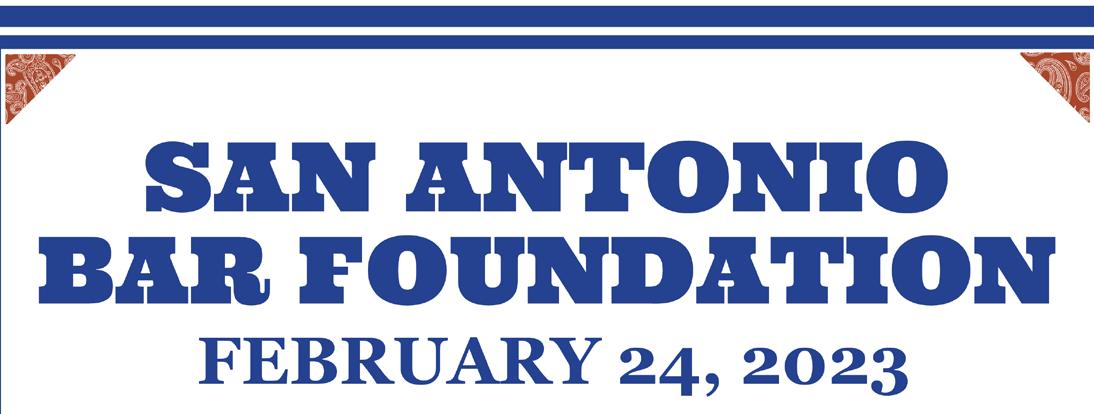
• SAYLA OUTSTANDING YOUNG LAWYER AWARD: Recognizes one young lawyer who has demonstrated professional proficiency, service to the profession and the community and is 36 years or younger as of June 1, 2022, or initially licensed within 60 months prior to June 1, 2022.

• SAYLA LIBERTY BELL AWARD: Recognizes one outstanding nonlawyer who has made the most selfless contribution to their community to strengthen the effectiveness of the American system of justice by instilling better understanding and appreciation of the law.
• SAYLA OUTSTANDING MENTOR AWARD: Recognizes one attorney who serves as a role model and consistently demonstrated a commitment to mentoring younger lawyers in their legal community.
We can help with:
Scan QR code for nomination details, or visit sabar.org/ nominations.
• HIPPA Compliance (TX HB300 applies)
• Cloud: storage, files, computers, servers

• Computers: repairs, upgrades, purchases, encryption
• Servers: setup, repairs, maintenance, purchases
• Email: domains, migration, backup, encryption
• Office 365: email, OneDrive, backup and Office software
• VoIP phones: includes Quality of Service (QoS) and backup internet
• Network: devices, setup, repairs, maintenance
• Call when you need us or customized service options available
• Remote and on-site support, antivirus programs, virus removal, maintenance
www.pstus.com 210-385-4287 support@pstus.com

January–February 2023 | San Antonio Lawyer® 27
Confidentiality in a Court of Record
By Chief Justice Rebeca C. Martinez and Jack Salmon
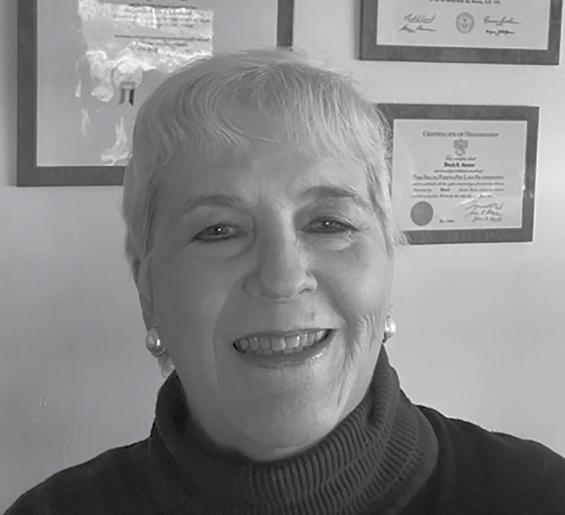
The Fourth Court of Appeals must hand down written opinions that are cogent and meaningful, not only to the litigants, but also to members of the judiciary, the bar, and the public. See R.V.K. v. L.L.K., 103 S.W.3d 612, 614 (Tex. App.—San Antonio 2003, no pet.)(en banc). We may not issue sealed opinions. See Tex. Gov’t Code Ann. § 552.022(a)(12); Tex. R. App. P. 47.3; see also Tex. R. App. P. 76a.1. Our task is complicated, however, when confidential matters are in dispute or when sensitive matters, such as custody of children, are involved. Recently, we have seen an increase in requests to keep information confidential.
To write opinions, we review the clerk’s and reporter’s records and the parties’ briefs. Typically, records are sealed by the trial court and remain sealed on appeal. Texas Rule of Civil Procedure 76a sets out detailed rules regarding sealing trial court records, and a party wishing to challenge a sealing order may appeal the order. See Tex. R. Civ. P. 76a.8. When a record on appeal potentially should have been sealed but was not, we have some discretion to return the matter to the trial court. See Graven v. State, 630 S.W.3d 99 (Tex. App.—Waco, 2020, no pet.) (per curiam).
With briefs, Texas Rule of Appellate Procedure 9.10 specifically allows us to order that a document, such as a brief, be filed under seal in a criminal appeal. See Tex. R. App. P. 9.10(g). However, with civil appeals, no rule of appellate procedure, local rule, or internal operating procedure specifically allows a party to file a sealed brief. Instead, privacy protections are afforded by the requirement in Texas Rule of Appellate Procedure 9.9 that the parties redact sensitive data in their publicly available briefs. See Tex. R. App. P. 9.9(c). Nevertheless, we and our sister courts of appeals have allowed parties to file sealed briefs, but there is little published precedent on the matter. See In re Cook, 629 S.W.3d 591, 595 n.2 (Tex. App.—Dallas 2021, no pet.); Navasota Res., L.P. v. First Source Tex., Inc., 206 S.W.3d 791, 793 (Tex. App.—Waco 2006, no pet.) (Gray, C.J., dissenting).
When our opinions address sensitive matters, we face an “unusual problem.” Kartsotis v. Bloch, 503 S.W.3d 506, 510 (Tex. App.—Dallas 2016, pet. denied). We must “strike a fair balance” between keeping sensitive information confidential and fulfilling our responsibilities as a court of record. See R.V.K., 103 S.W.3d at 615. This task can be difficult to accomplish because sensitive information, which is sealed or redacted, may go to “the very heart of the controversy.” Id. at 614. To strike this balance, we have referenced and excerpted sealed portions of the record but kept identities hidden. See id. at 615. We also have adopted aliases to refer to minors and their adult family members if necessary to protect the minors’ identities. See Tex. R. App. P. 9.8. Other courts have stuck the balance by keeping references to sensitive information “deliberately vague” or “generalized.” TMX Fin. Holdings, Inc. v. Wellshire Fin. Services, LLC, 515 S.W.3d 1, 4 n.1 (Tex. App.—Houston [1st Dist.] 2016, pet. dism’d); Mi Gwang Contact Lens Co., Ltd. v. Chapa, No. 13-13-00306CV, 2015 WL 3637846, at *7 (Tex. App.—Corpus Christi–Edinburg June 11, 2015, no pet.).
When confidential matters are present, practitioners should be mindful of both the rules that apply to them concerning sealing and
redacting sensitive information and our obligation to issue opinions open to the public. When the reason for confidentiality is not obvious, the parties should advise us, so that we can make every effort to preserve confidentiality while fulfilling our obligations as a court of record.
Chief Justice Rebeca C. Martinez has served on the Fourth Court of Appeals since January 2013, and as Chief Justice since January 2021. Chief Justice Martinez previously served for United States Magistrate Judge Eduardo E. de Ases for the Western District of Texas and for Justice Federico Hinojosa on the Thirteenth Court of Appeals, and she practiced trial law for over twenty years.

Jack Salmon has served as Staff Attorney to Chief Justice Martinez since April 2019, and as Chief Staff Attorney since July 2021. Previously, he served as Law Clerk to Judge Xavier Rodriguez and Judge Orlando L. Garcia for the Western District of Texas and practiced civil-rights law.

28 San Antonio Lawyer® | sabar.org
Fourth Court Update
DINAH GAINES MEDIATIONS, PLLC With 30 years as a trial attorney and 15 years as the Staff Attorney and General Counsel for the Bexar County Civil District Courts, Dinah has the experience, patience and understanding to address all your mediation needs. SCHEDULE AT www.DinahGainesMediations.com or call (210) 204-2191
Western District of Texas Court Summaries
By Soledad Valenciano, Melanie Fry, and Jeffrie Lewis
If you are aware of a Western District of Texas order that you believe would be of interest to the local bar and should be summarized in this column, please contact Soledad Valenciano (svalenciano@svtxlaw.com, 210-787-4654) or Melanie Fry (mfry@dykema.com, 210-554-5500) with the style and cause number of the case, and the entry date and docket number of the order.
Substituted Service; Social Media
Aguilar v. Colazo-Diaz, et. al, SA-22-CV00642-XR (Rodriguez, X., October 13, 2022)
The court issued a show cause order when the plaintiff’s ninety-day period to serve a defendant expired. In response, the plaintiff provided an affidavit showing that her process server tried to personally serve the defendant seven times in Pennsylvania, each time leaving a business card, and once speaking to the defendant’s sister-in-law, with whom the defendant previously lived. The plaintiff requested permission for substituted service at the sister-in-law’s home or via Facebook. FRCP 4(e)(1) and (f) allow service by methods permitted under Texas law, and TRCP 106 permits substituted service when primary service methods prove unsuccessful. When the residence of a defendant is unknown or the defendant is transient, and after due diligence the plaintiff has been unable to locate the defendant, a court may authorize substitute service on the defendant. The court found the plaintiff’s affidavit “strictly complied” with TRCP 106(b)’s requirements justifying substituted service, which service can be on another adult or by “any other manner deemed to be reasonably effective to give the defendant notice, including social media, email or other technology.” The court authorized the plaintiff to leave a copy of the summons, complaint, and the judge’s order with anyone over sixteen years of age at the sister-in-law’s residence and to post the items on Facebook, as together these efforts are reasonably effective to give the defendant notice of the claims against him. The plaintiff’s motion included a screenshot of the defendant’s Facebook profile and confirmed it was the defendant’s account. Footnote 2 of the opinion collects cases directing courts to consider whether the social media technology “actually belongs to the defendant and whether
the defendant regularly uses or recently used the technology.” Because the plaintiff’s motion demonstrated good cause for her delay in serving the defendant, the court granted her motion for extension of time to serve him
Derivative Jurisdiction
Butler v. Aune, SA-22-CV-00632-JKP (Pulliam, J., October 4, 2022)
A pro se plaintiff sued the United States Postal Service National Tort Center and two of its employees in Bexar County Justice Court. The defendant removed the case to federal court pursuant to 28 U.S.C. § 1442. Then, the defendant asserted sovereign immunity and moved for dismissal under FRCP 12(b)(1) and the derivative jurisdiction doctrine. Under the derivative jurisdiction doctrine, when a case is removed from state to federal court, the jurisdiction of the federal court is derived from the state court’s jurisdiction. When the state court lacks jurisdiction of the subject matter or of the parties, then the federal court acquires none, although in a like suit originally brought in a federal court, the court would have had jurisdiction. The court noted that although the derivative jurisdiction doctrine does not apply to claims removed under 28 USC § 1441, it remains applicable for removals under 28 USC § 1442. Because the plaintiff’s claims were only available under the Federal Torts Claim Act, whereby jurisdiction is exclusively with the federal courts, and not the state courts, and she first brought her claim in state court, there is a jurisdictional defect. Accordingly, the court dismissed the action without prejudice for lack of jurisdiction.
Revival of Dormant Judgment
Resolution Trust Corp. v. Barnes, SA-9000565-XR (Rodriguez, X., October 18, 2022). The successor in interest to the original plaintiff
and holder of a December 1990 judgment against the defendant appeared in the original action nearly a year after the judgment became dormant and filed a motion to revive the dormant judgment. The court noted dormant judgments are not void per se and may be “revived” within two years of the date on which the judgment became dormant under Texas law through scire facias and Texas Rule of Civil Procedure 154. Finding the owner/ plaintiff filed its motion within two years of the date the judgment became dormant and had properly served the defendant in accordance with Texas Rule of Civil Procedure 154 by serving a copy of the summons and the motion to revive in accordance with a court order granting substituted service, the court granted the motion to revive and directed the clerk to issue a writ of execution.
Summary Judgment; Existence of Partnership
Liserio v. Colt Oilfield Servs., LLC, SA-19CV-01159-XR (Rodriguez, X., October 28, 2022).
An employee sued his employer, a limited liability company, alleging that he and two others were silent partners in the company despite the certificate of formation not indicating as such. The company moved for summary judgment, arguing there was no issue of material fact regarding whether the plaintiff was a partner of the company. The plaintiff’s evidence consisted of: (1) a representation by another alleged silent partner that they were partners and that the plaintiff owned 15% of the company; (2) a paystub calling plaintiff “Equity”; (3) a letter from the CFO stating the plaintiff had received a check for “his partnership interest”; (4) a Texas Franchise Public Information Report that listed the plaintiff as a “member” of the company; (5) payment to the plaintiff of a 15% “distribution”; and (6) a contract signed by the plaintiff
January–February 2023 | San Antonio Lawyer® 29 Federal Court Update
after another alleged silent partner left that increased the plaintiff’s distribution percentage to 25% and granted him 25% of the “net proceeds upon sale of” the company. The court granted summary judgment. Sharing profits does not necessarily make someone a partner. The plaintiff never received a K-1. Receipt of distributions through the typical payroll process indicated that he was paid as an employee. Company documents referring to the plaintiff’s “partnership interest” and membership did not evidence intent on behalf of the only partner named in the formation documents to convey an ownership interest, and it was only his intent that mattered. The plaintiff admitted he had no authority to write company checks or access the company’s books. And there was no evidence that the plaintiff expected to share in the company’s losses or made contributions to the company’s formation.
Motion for New Trial; Evidence of Appraisal; Evidence of PostVerdict Informal Jury Discussions
Winston v. State Farm Lloyds, SA-20-CV00515-JKP (Pulliam, J. October 14, 2022).
Following a jury trial in a dispute arising from State Farm’s refusal to pay the appraised amount to replace the plaintiff’s roof, defendant State Farm moved for a new trial, arguing the court’s decisions about appraisal-related issues led to confusion of the issues presented to the jury and substantially and unfairly prejudiced State Farm. At trial, State Farm had asked to exclude all appraisal-related evidence, which request the court denied, instead admitting
limited evidence of the appraisal. Specifically, the court excluded the detailed appraisal award, but admitted a summary of its findings as to the amount of loss sustained and allowed the plaintiff’s appraiser to testify as a fact witness with an appropriate limiting instruction. Though the appraisers lacked authority to determine State Farm’s liability pursuant to the policy language, the parties had agreed the appraisal award was binding as to the amount of loss sustained, and therefore the appraisalrelated evidence was admissible to demonstrate the loss to the plaintiff’s property, which was particularly relevant if (as it did here) the jury determined State Farm breached its contract. The court noted that without the appraisalrelated evidence, the jury would have no evidence of damages. In rejecting State Farm’s motion for new trial, the court explained its decision to admit some, but not all, appraisalrelated evidence properly balanced State Farm’s interest in excluding potentially prejudicial evidence with the plaintiff’s interest in presenting his case to the jury. In support of its motion for new trial and relying on an out-of-circuit case to support its assertion that “jury polling” can factor into a court’s decision to grant a motion for new trial, State Farm relied on post-verdict conversations supported by a declaration from State Farm’s counsel recounting his conversation with jurors to support its contention that the jury was confused. However, because the parties had declined to poll the jury after the verdict was entered this was not jury “polling,” but rather informal discussions post-verdict designed to get jurors’ impressions of how the
trial was conducted. Further, the declaration was inadmissible under FRE 606(b)(1) which provides that during an inquiry into the validity of a verdict, evidence about any statement made or incident that occurred during jury deliberations is inadmissible. Finding no evidence the jury gave any indication that it was split or any evidence of juror misconduct, the court denied the motion for new trial.
Soledad Valenciano practices commercial and real estate litigation with Spivey Valenciano, PLLC. Melanie Fry practices commercial litigation and appellate law with Dykema Gossett PLLC. Jeffrie B. Lewis is Assistant General Counsel with Zachry Group.
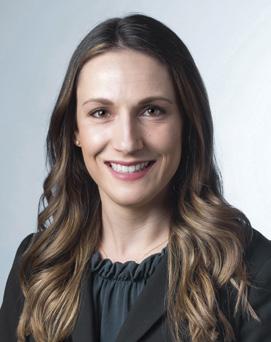
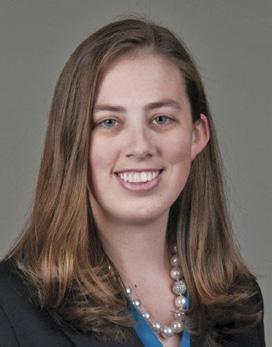
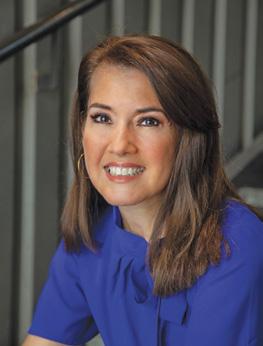
ad index
ATKG LLP 10
Broadway Bank 32
Covenant Legal Nurse Consulting 23
Davis Settlement Partners 15
Dinah Gaines Mediations, PLLC 28
Donald R. Philbin, Jr. P.C. 4
Frost - Banking, Investments, Insurance 6
Gallant Computer Investigative Services, LLC 11 Gunn, Lee & Cave, P.C. 31
Katzman & Katzman, PLLC 20
Kelmar Global 24
LawYaw by Clio 19
National Academy of Distinguished Neutrals 18
Ned Hodge - Insurance Architect 13
Professional Services Technologies 27
Pronto Process 13
RSM US LLP 14
Scott Baker Mediation, LLC 30
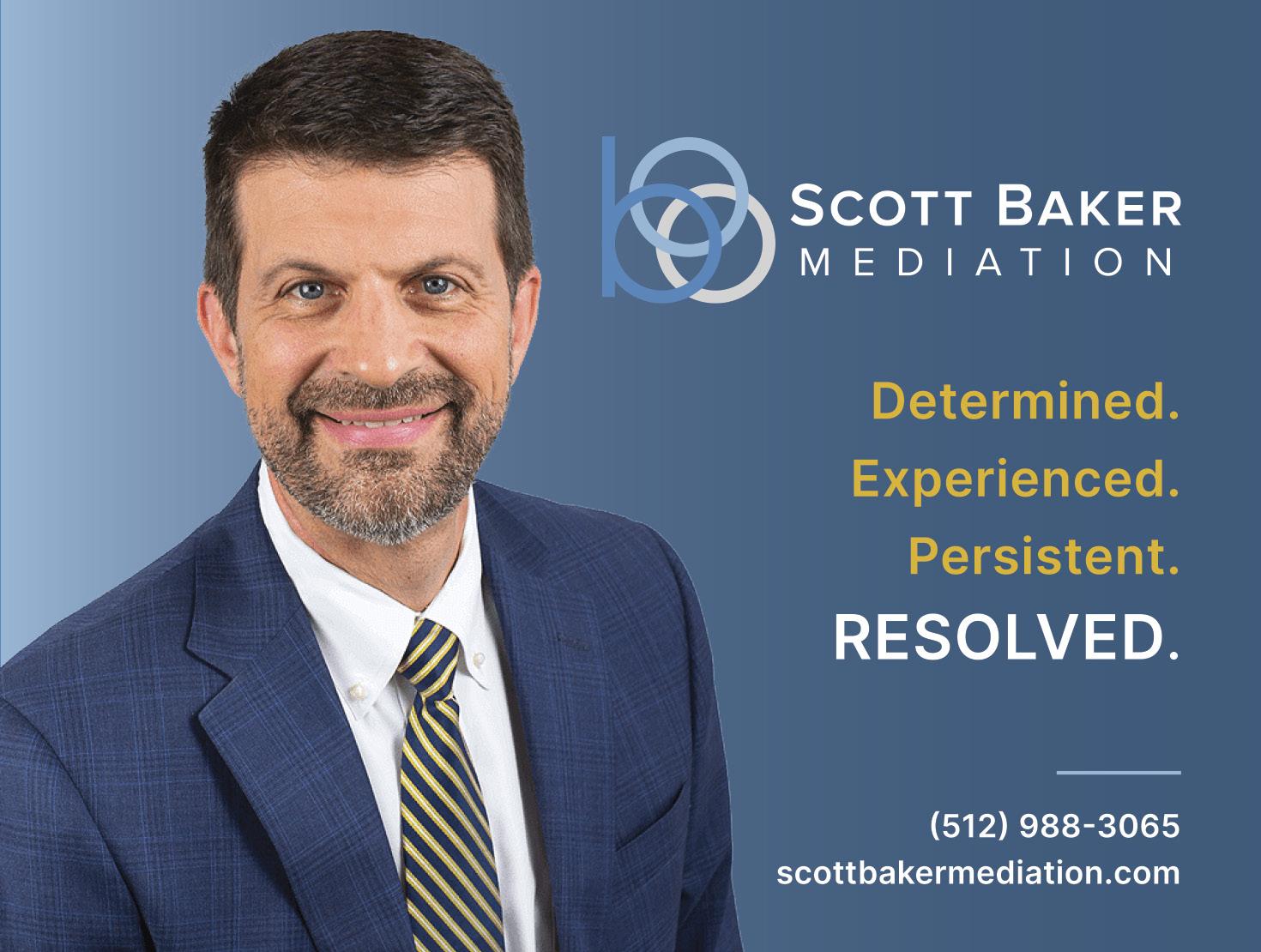
Steven Bankler 16
Texas Lawyer Insurance Exchange 9
The Association of Attorney-Mediators 11 theKFORDgroup 25
30 San Antonio Lawyer® | sabar.org
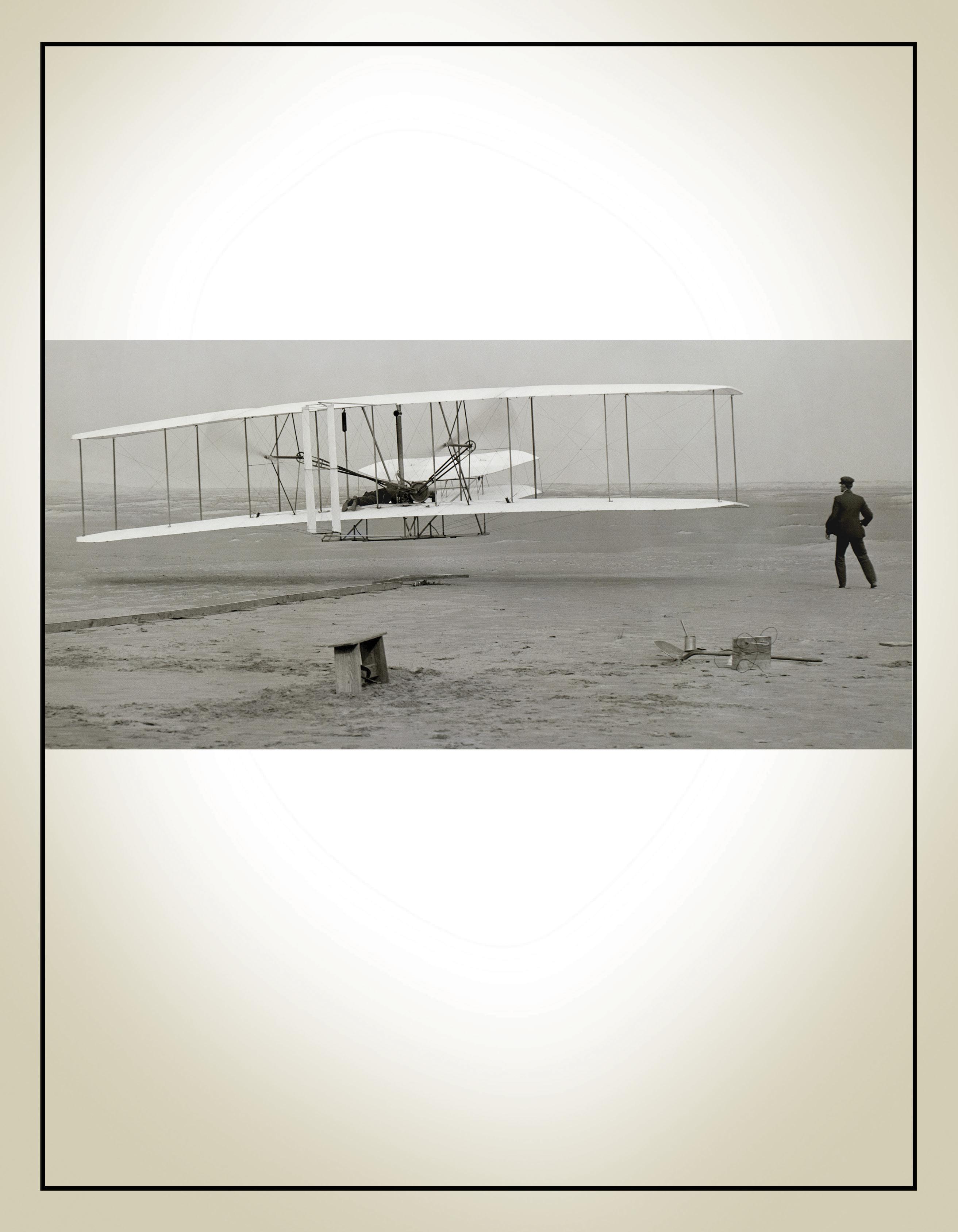
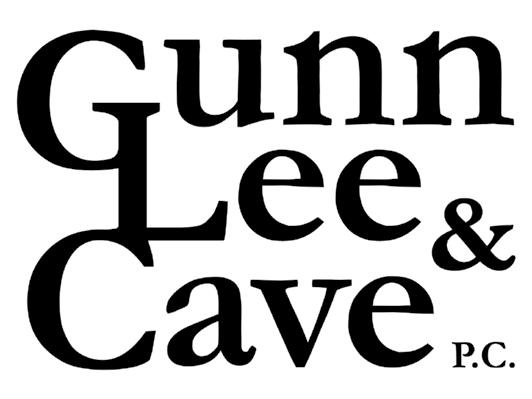
WEALTH & PRIVATE BANKING LINES OF CREDIT
A customized financial solution that gives you flexibility.
A customized financial solution that gives you flexibility.
Even with thoughtful planning and execution, your circumstances can change and opportunities can arise. As you develop your personal financial plans, consider your options for optimizing success. Strategically access liquidity to capitalize on opportunistic investments or manage your cash flow. With Broadway Bank’s Private Banking Line of Credit1 you will have access to additional funds while you work to reach your goals.
Even with thoughtful planning and execution, your circumstances can change and opportunities can arise. As you develop your personal financial plans, consider your options for optimizing success. Strategically access liquidity to capitalize on opportunistic investments or manage your cash flow. With Broadway Bank’s Private Banking Line of Credit1 you will have access to additional funds while you work to reach your goals.
Benefits of Private Banking Line of Credit:
Benefits of Private Banking Line of Credit:
• Lines of credit available from $30,000 to $750,000
• Lines of credit available from $30,000 to $750,000
• Maximum term of 24 months
• Maximum term of 24 months
• Interest-only payments due monthly
• Interest-only payments due monthly
• No collateral required for unsecured lines of credit
• No collateral required for unsecured lines of credit
Our low-rate secured and unsecured lines of credit are designed exclusively for Private Banking clients. They are an excellent option for accessing the money you need when you need it.
Our low-rate secured and unsecured lines of credit are designed exclusively for Private Banking clients. They are an excellent option for accessing the money you need when you need it.


A Private Bank Line of Credit allows you to:
A Private Bank Line of Credit allows you to:
• Manage your cash flow
• Manage your cash flow
• Access funds immediately without approval
• Access funds immediately without approval
• Pay for expenses quickly
• Pay for expenses quickly
• Cover gaps in irregular monthly income
• Cover gaps in irregular monthly income
• Meet seasonal and/or fluctuating cash demand
• Meet seasonal and/or fluctuating cash demand
Contact our Private Banking team today to apply. (210) 283-4023 • broadway.bank/private
Contact our Private Banking team today to apply. (210) 283-4023 • broadway.bank/private
1To be eligible, you must qualify to be a Broadway Bank Private Banking client. All loans subject to credit and collateral approval (if applicable). Rates, terms and conditions are subject to change without notice. Other restrictions and limitations may apply. Member FDIC. Rev. 12/22 / 1014998322.
1To be eligible, you must qualify to be a Broadway Bank Private Banking client. All loans subject to credit and collateral approval (if applicable).
Rates, terms and conditions are subject to change without notice. Other restrictions and limitations may apply. Member FDIC. Rev. 12/22 / 1014998322.
WEALTH & PRIVATE BANKING LINES OF CREDIT
















 By Robert Loree and Cassandra Pruski
By Robert Loree and Cassandra Pruski












































































